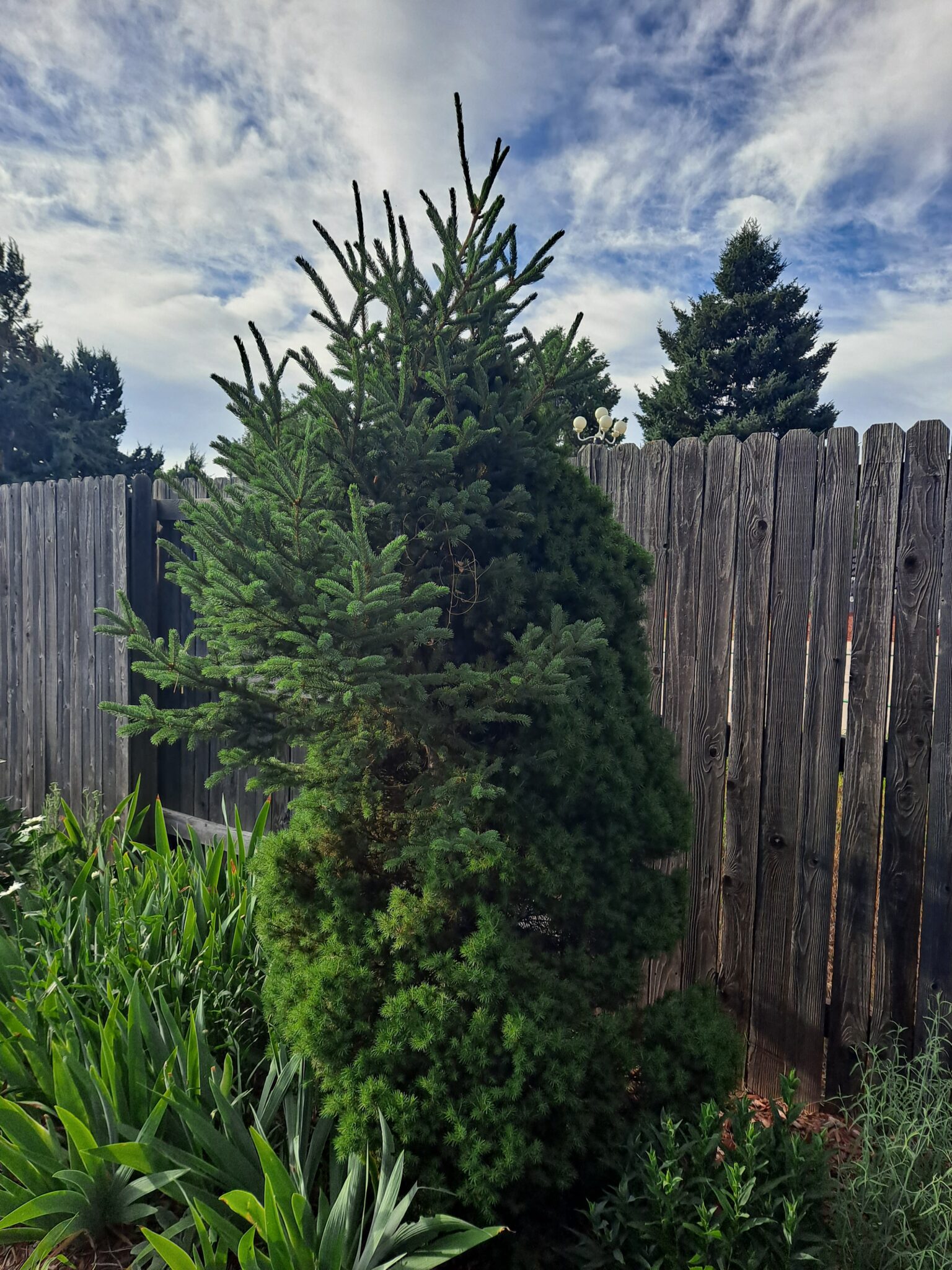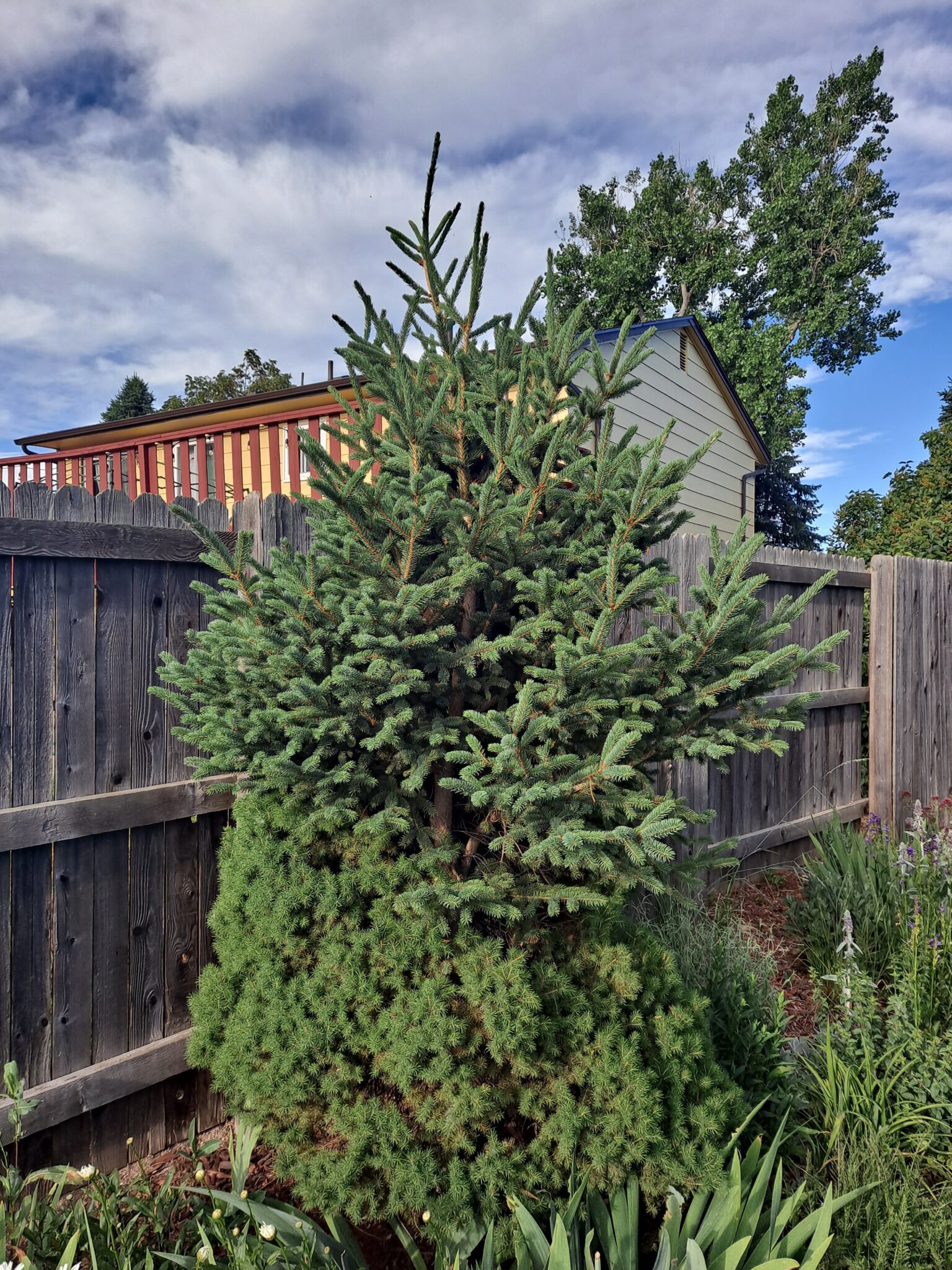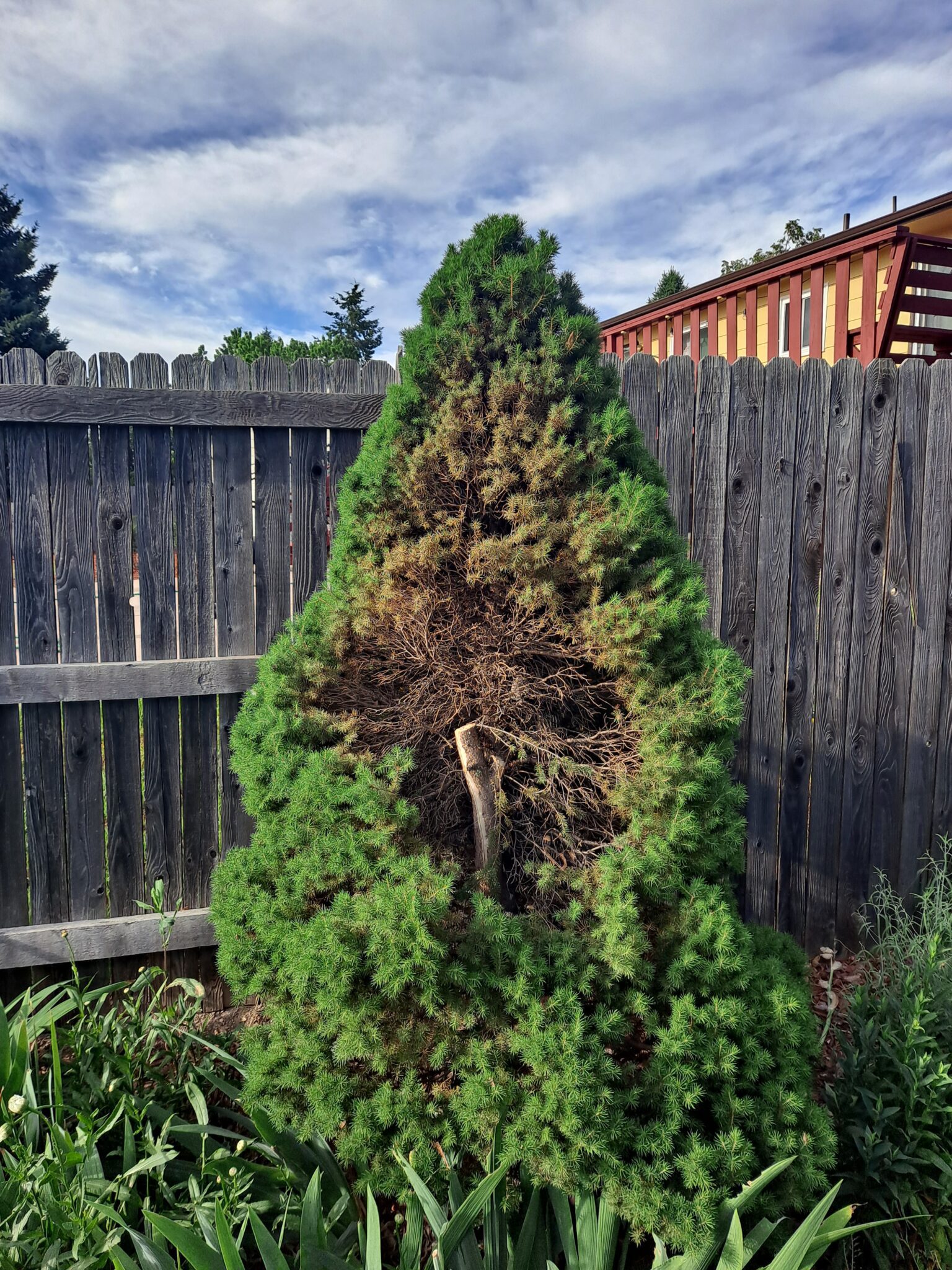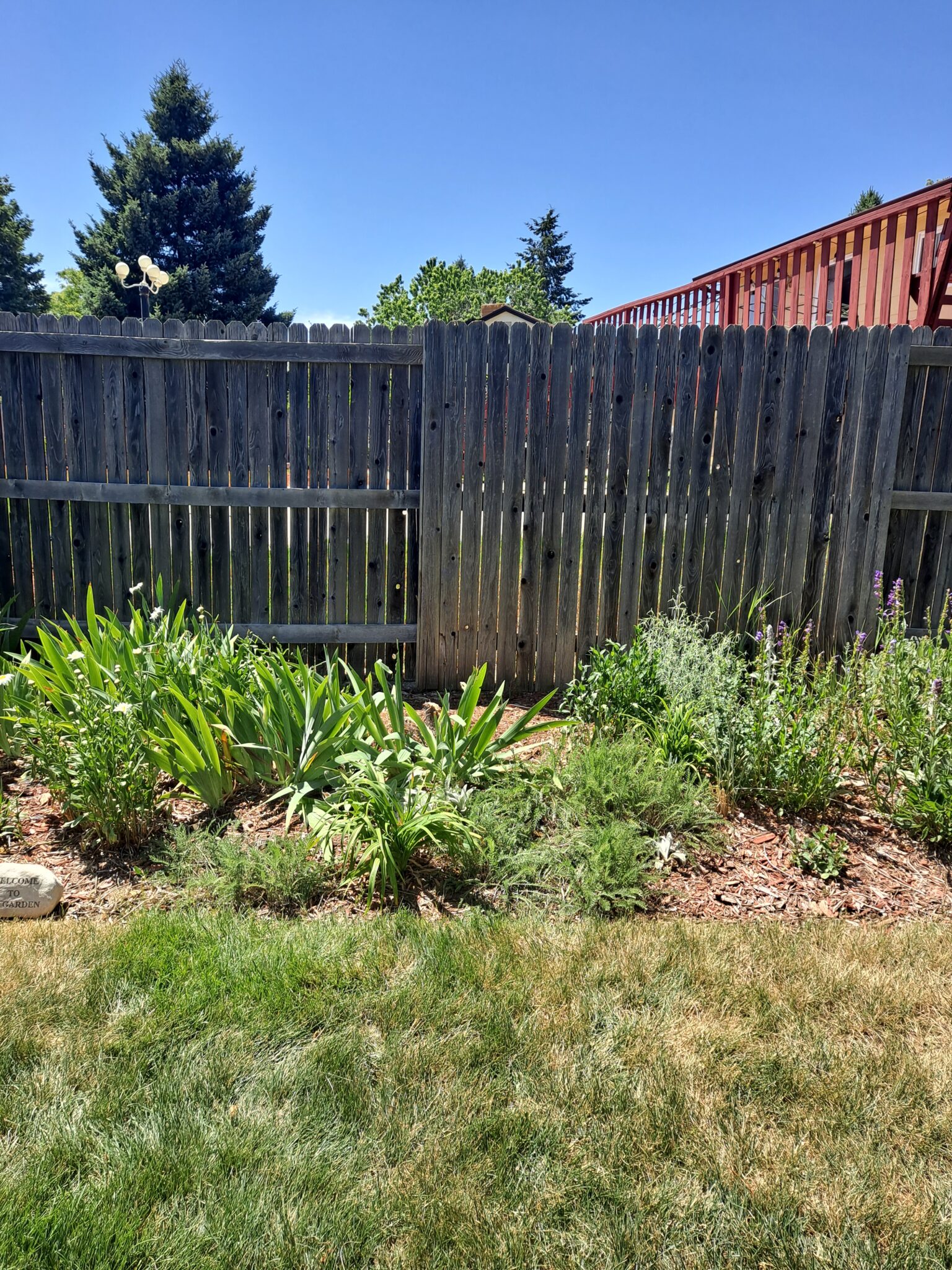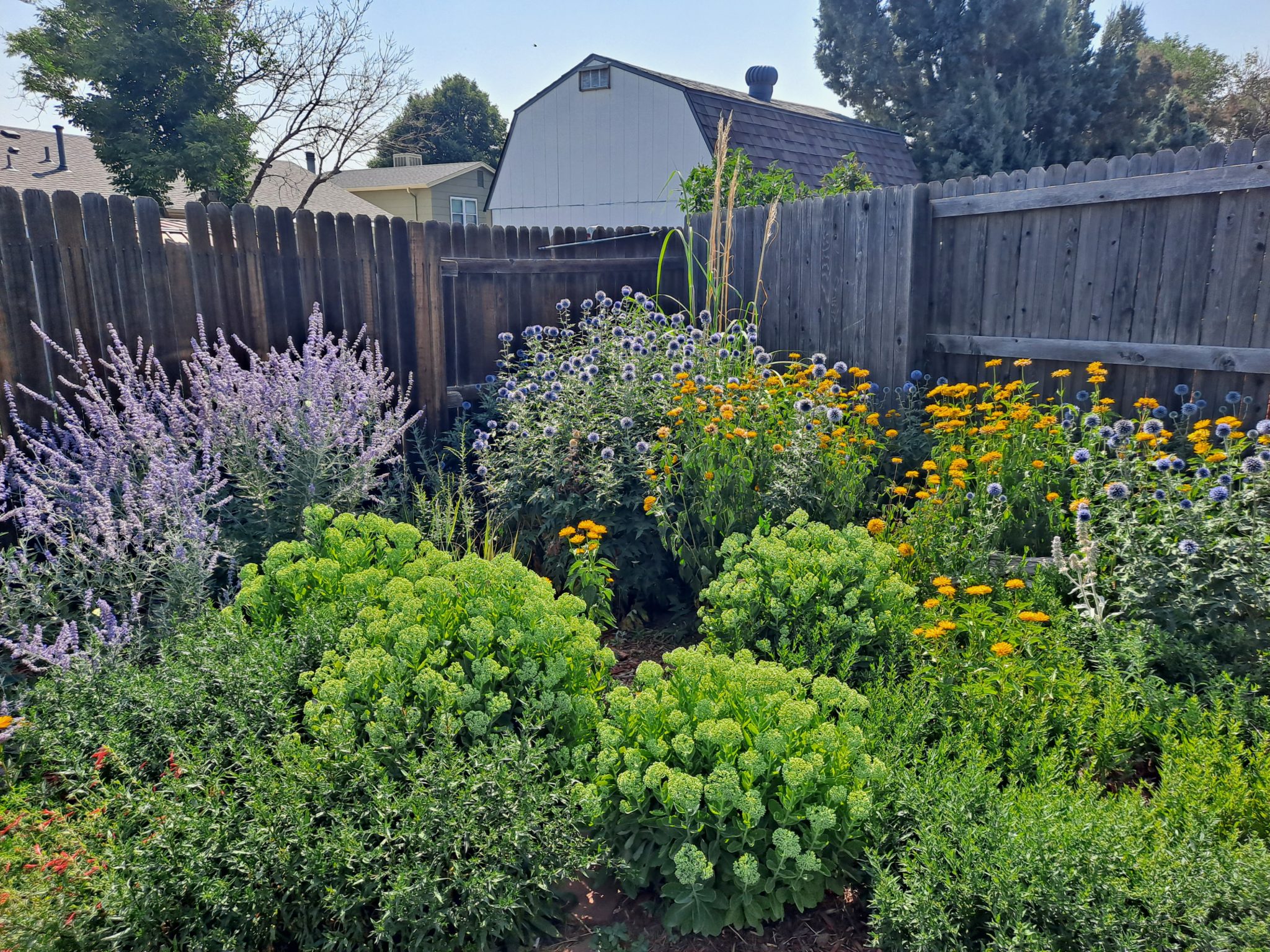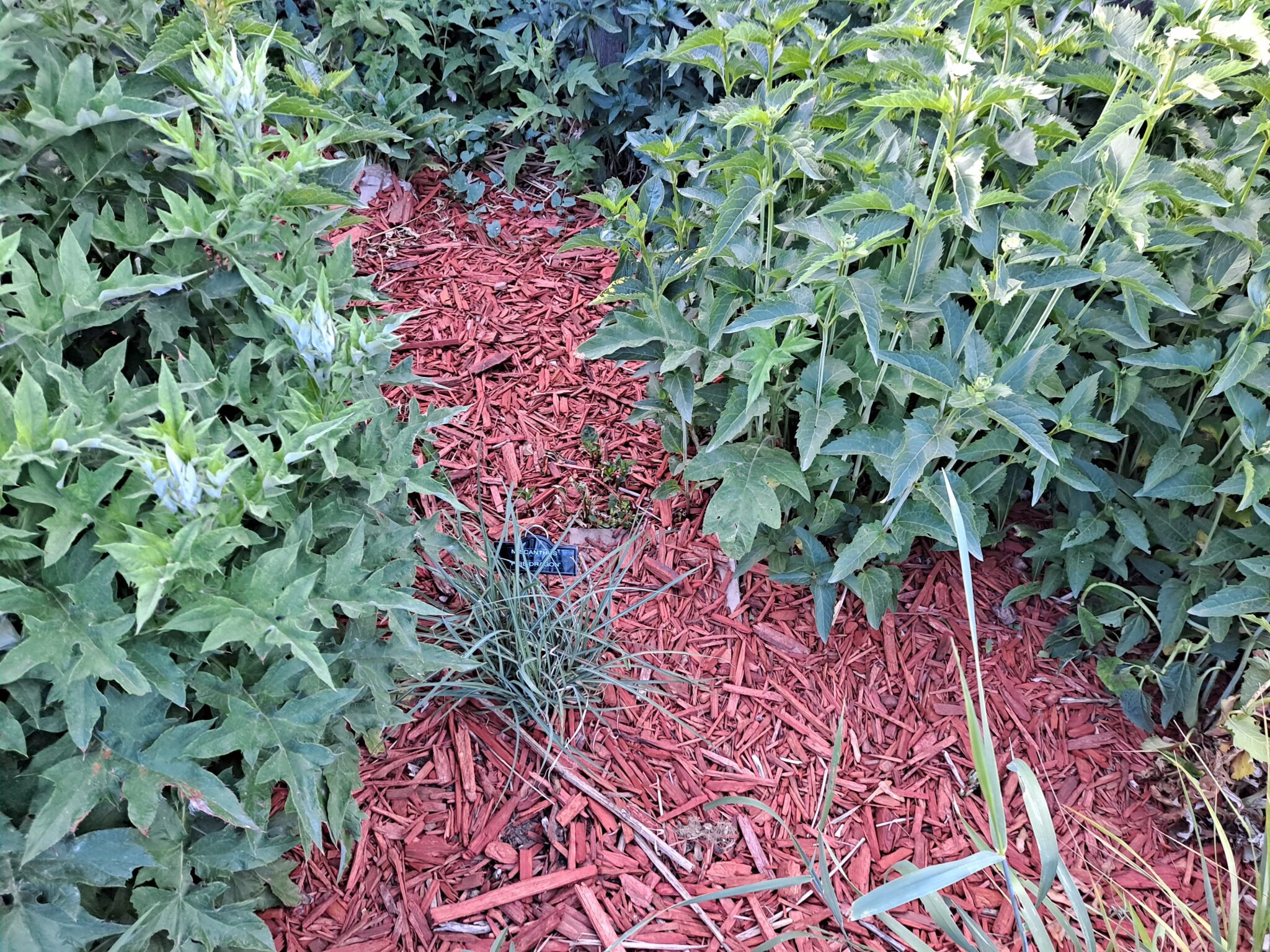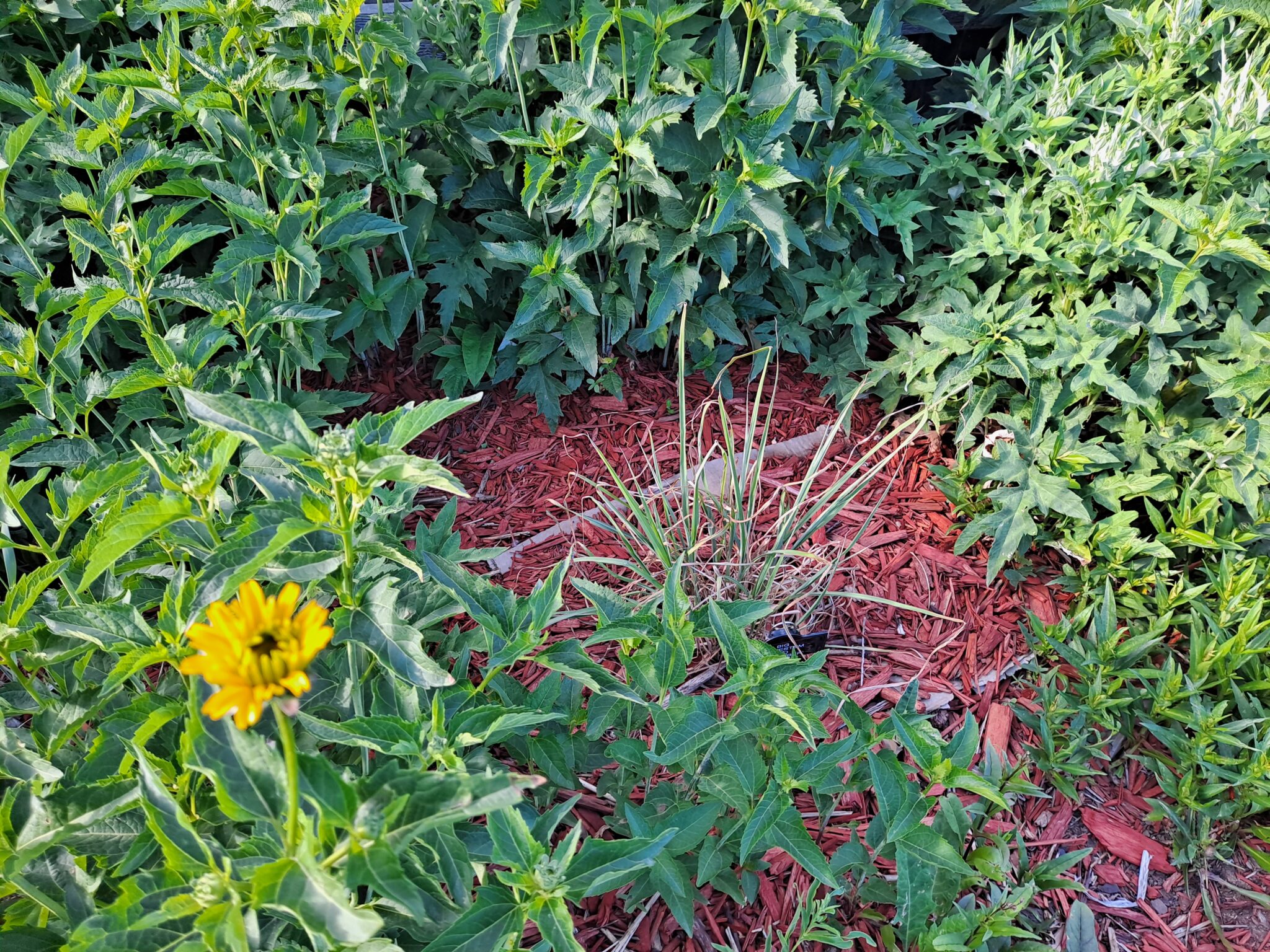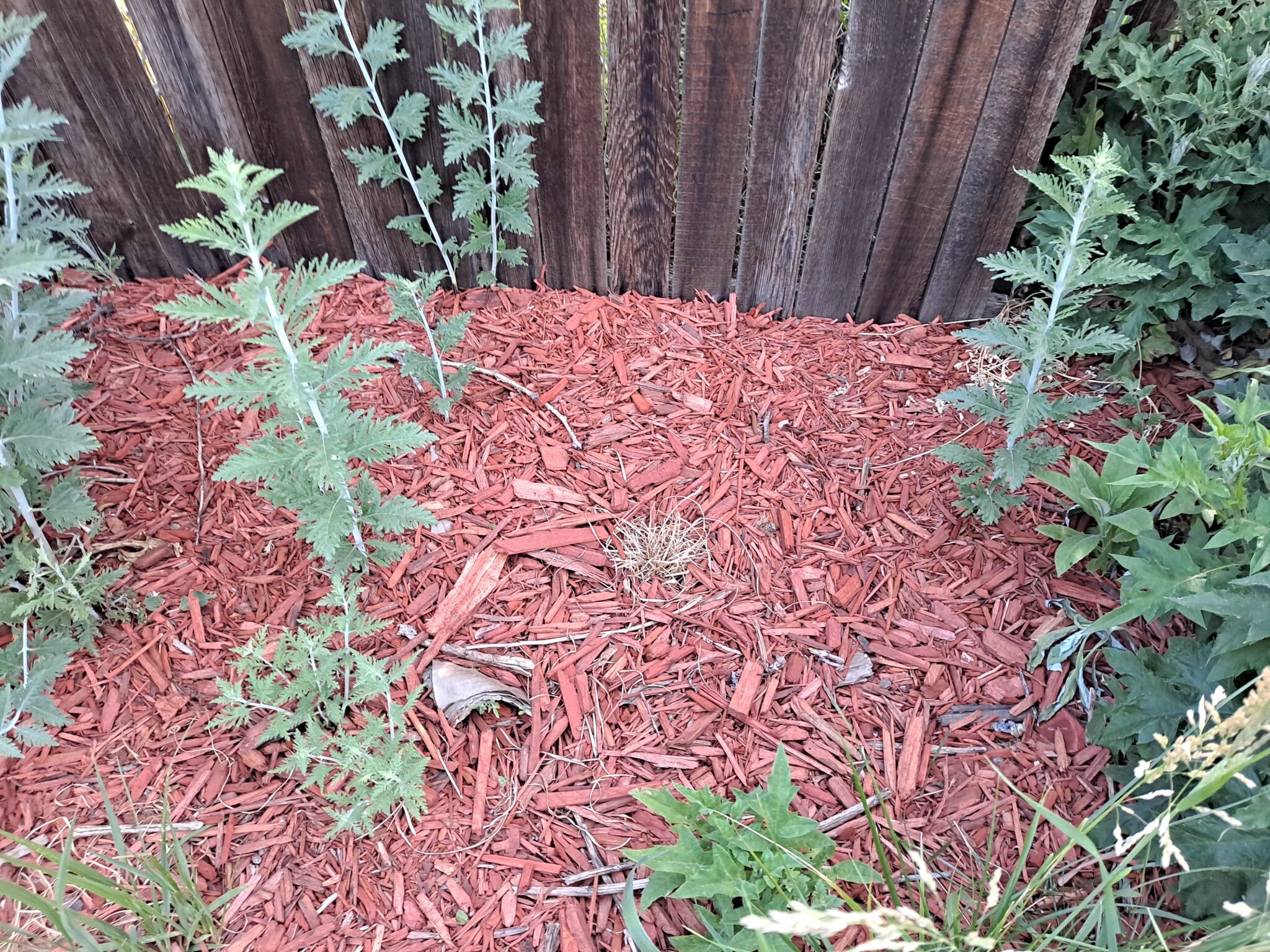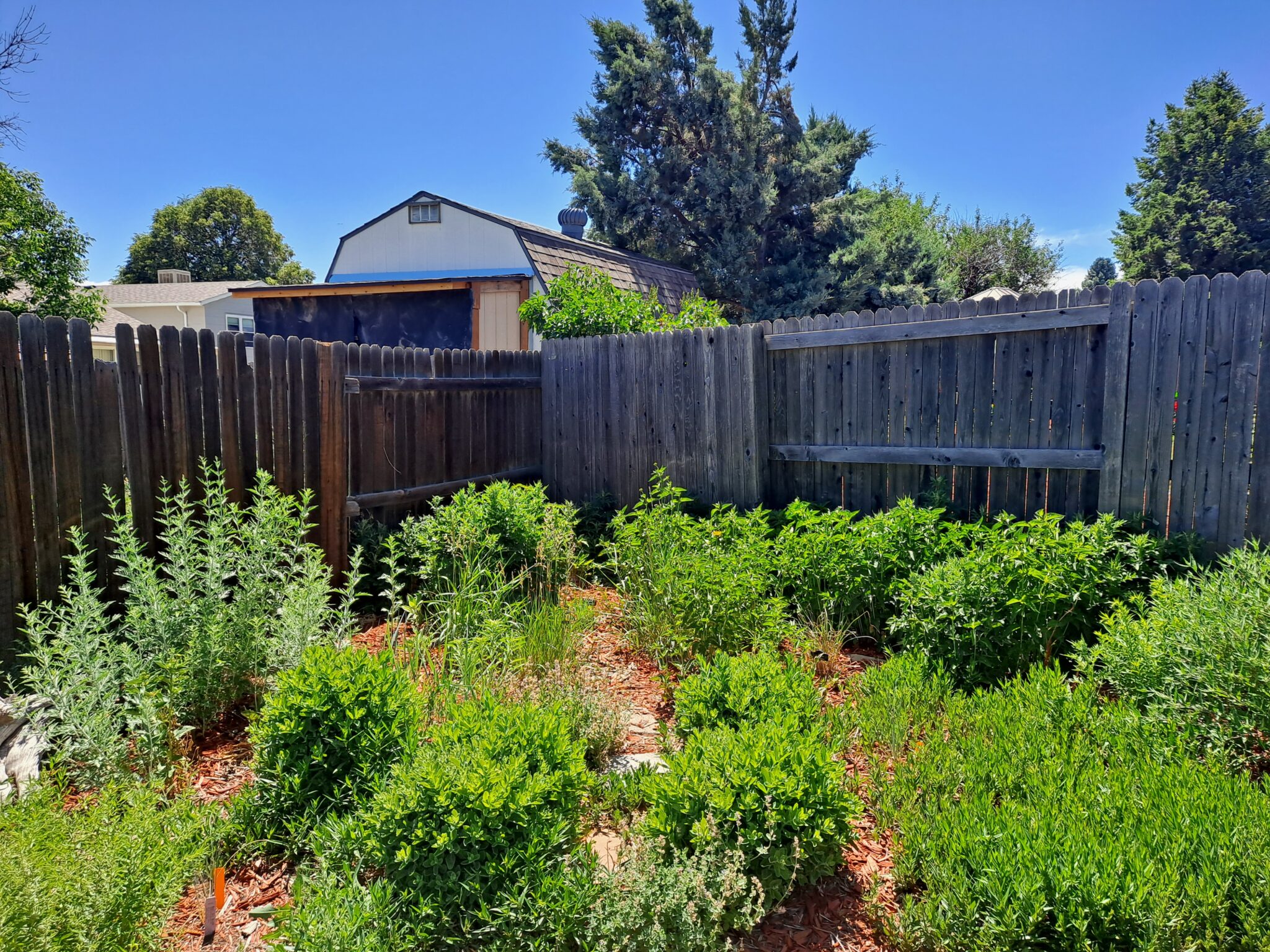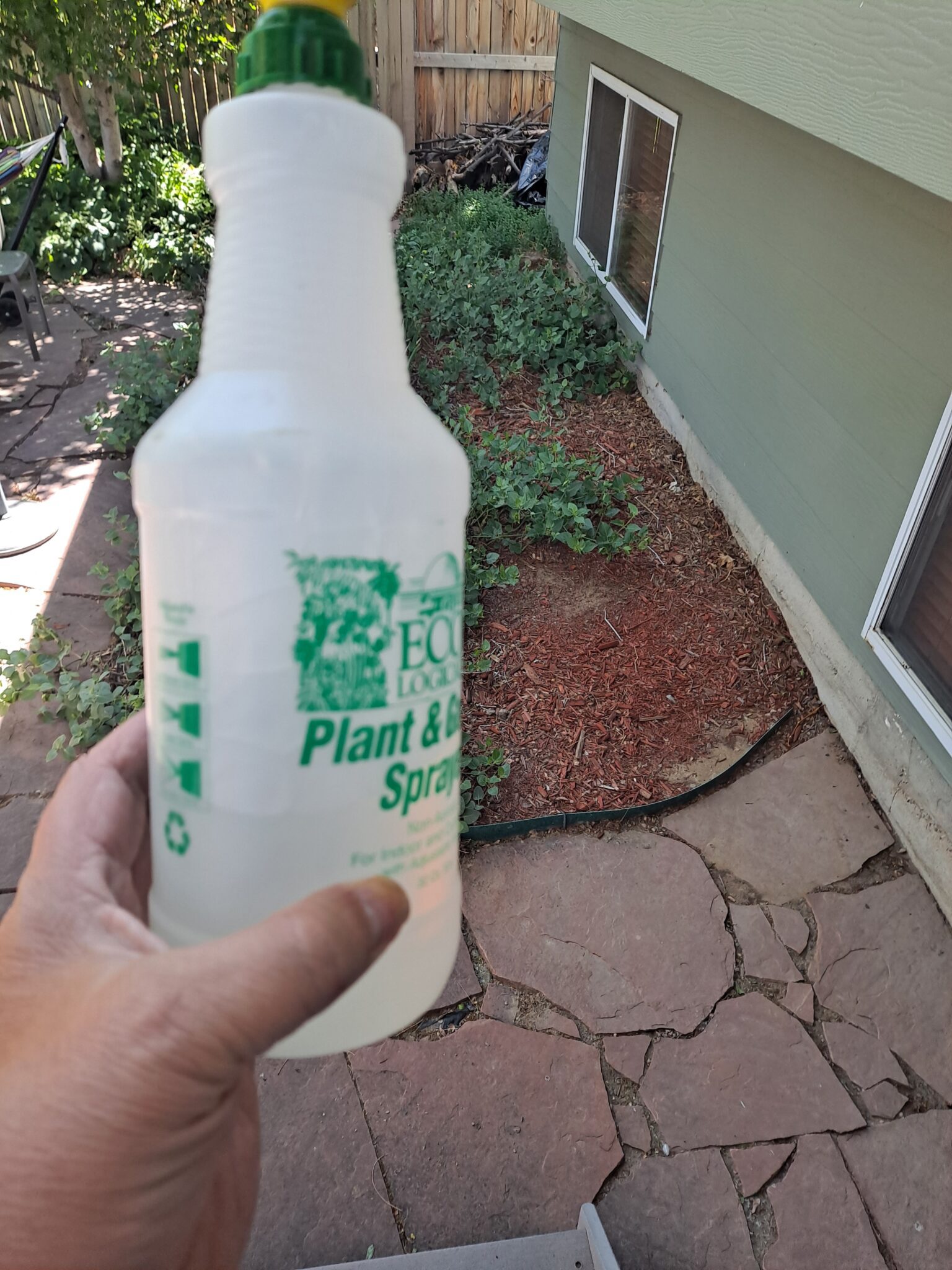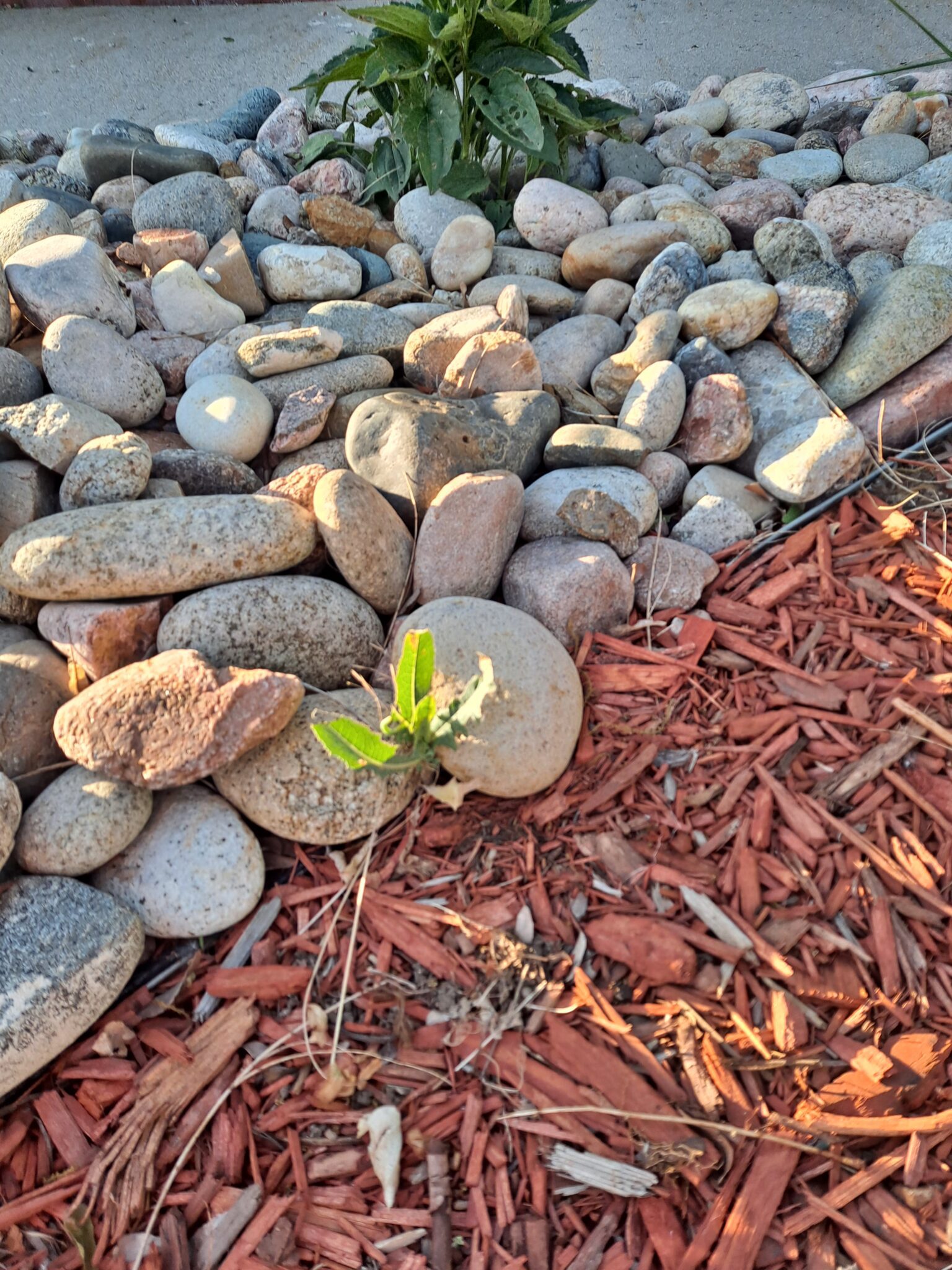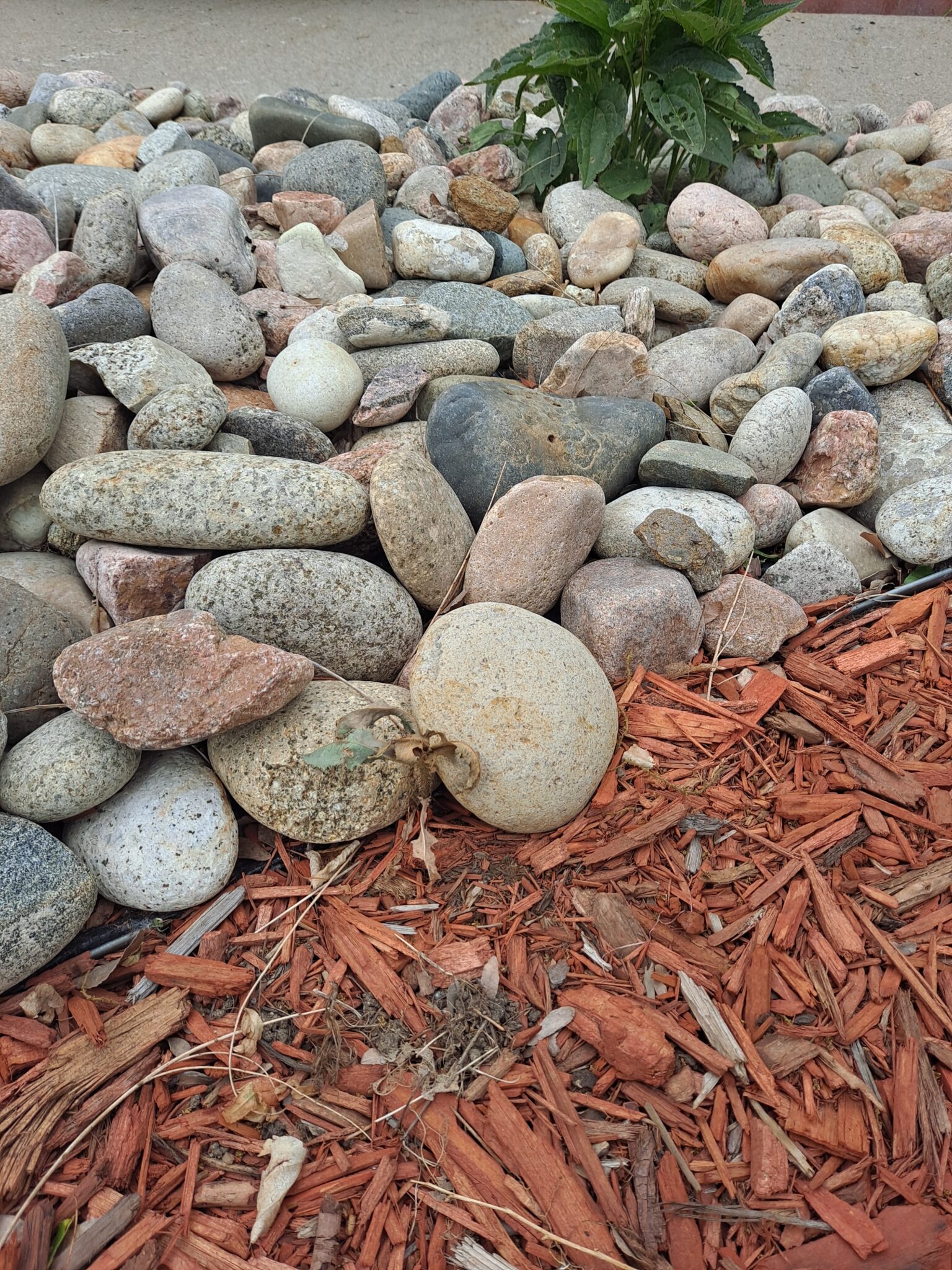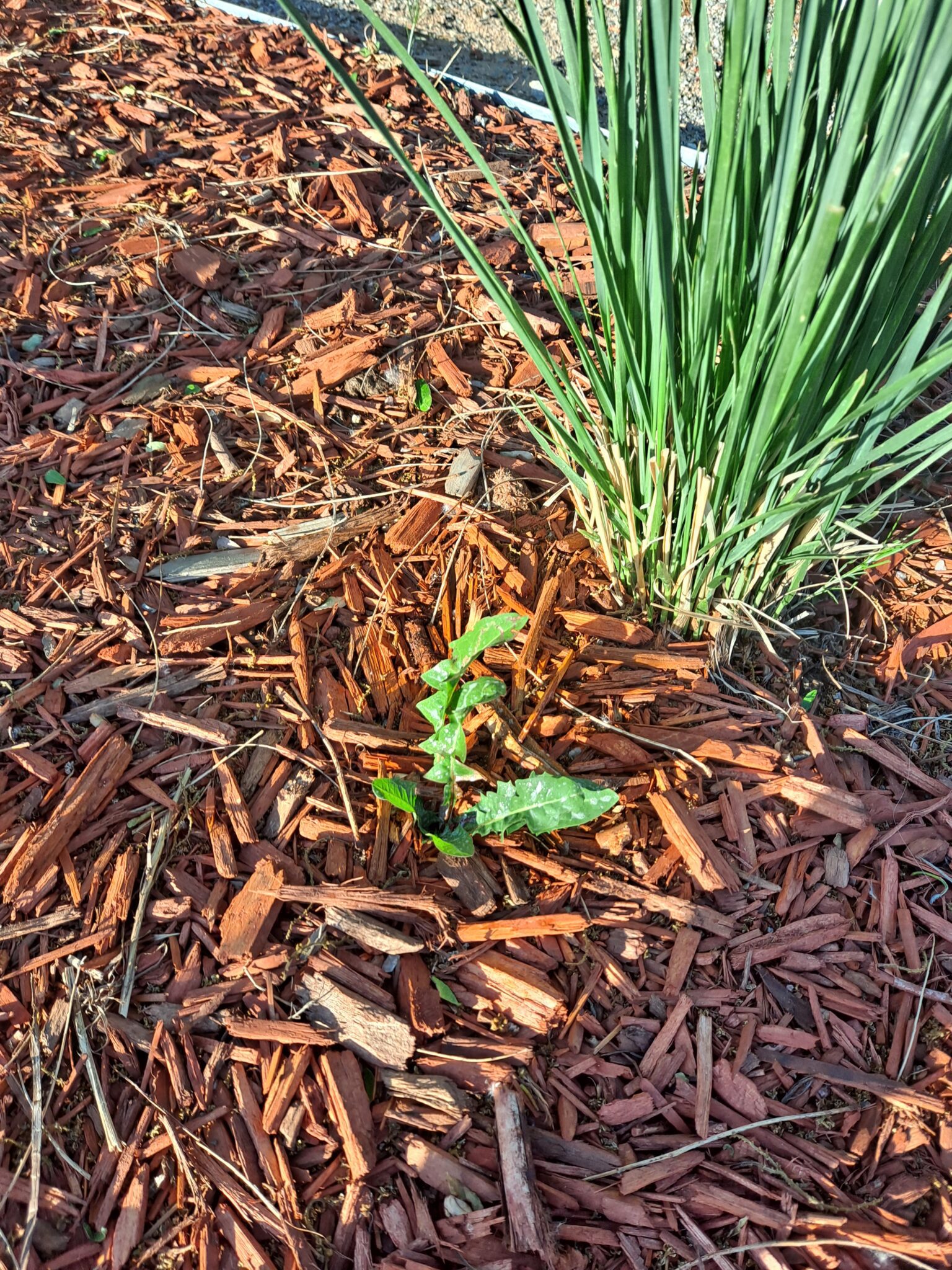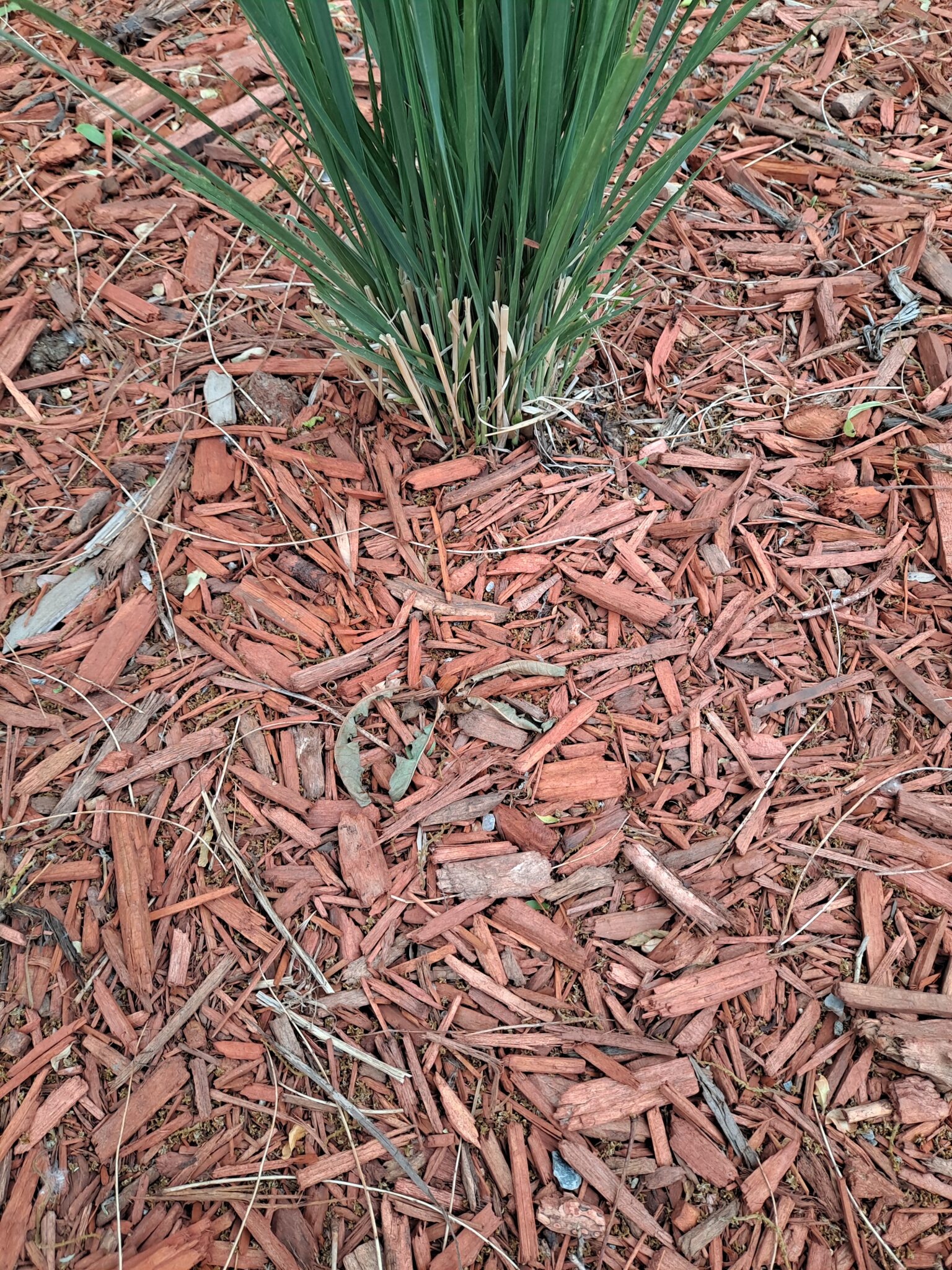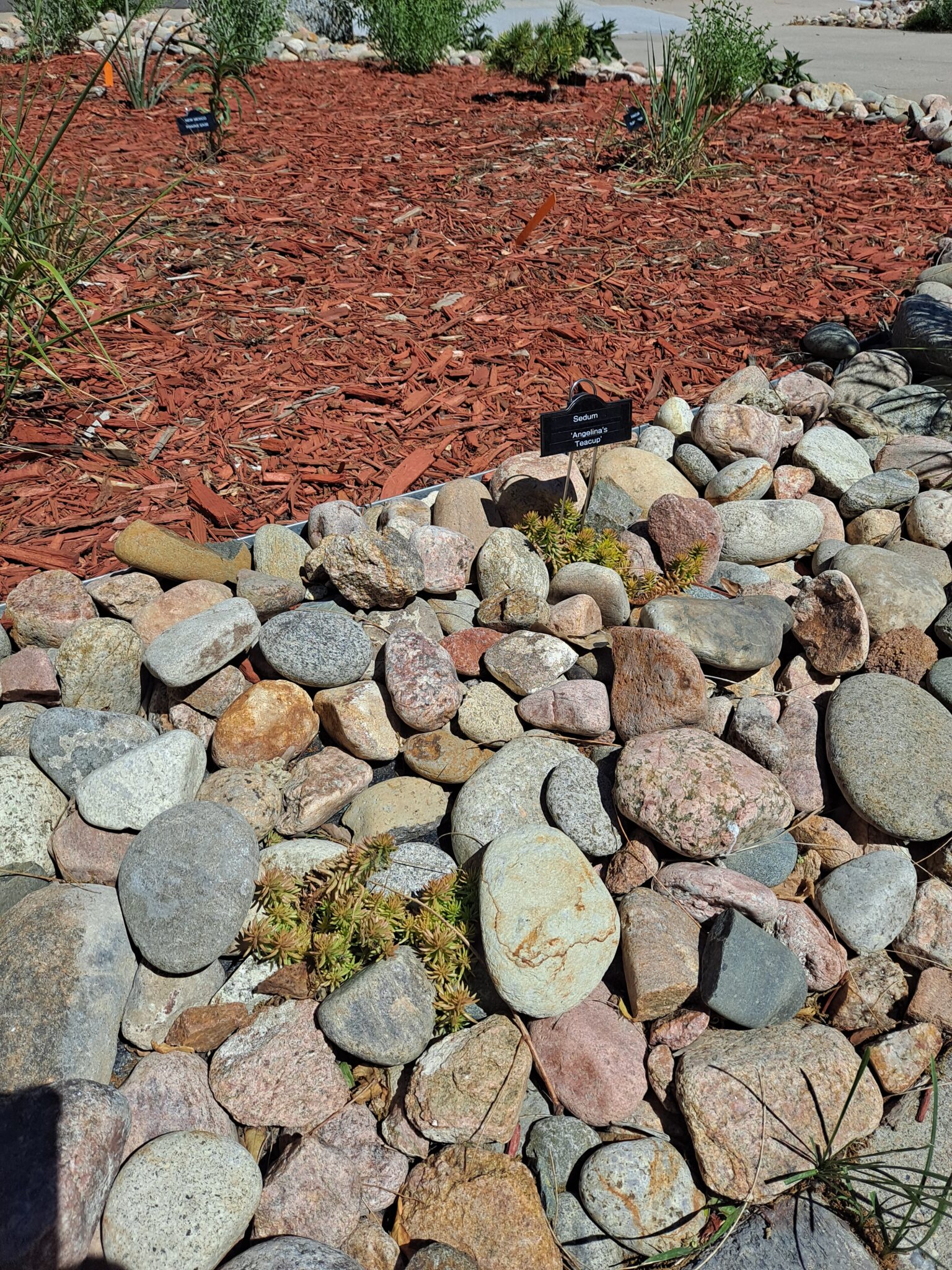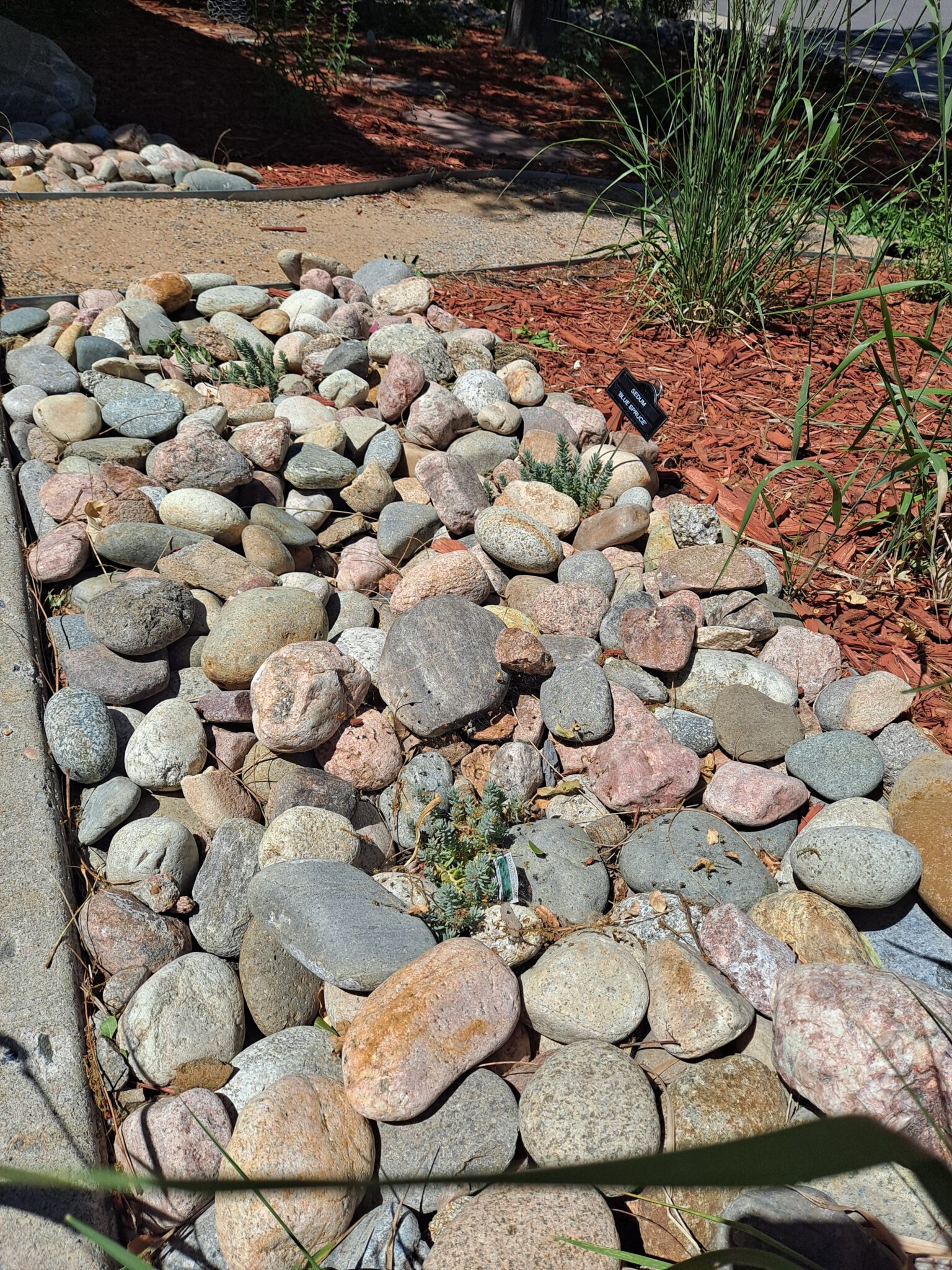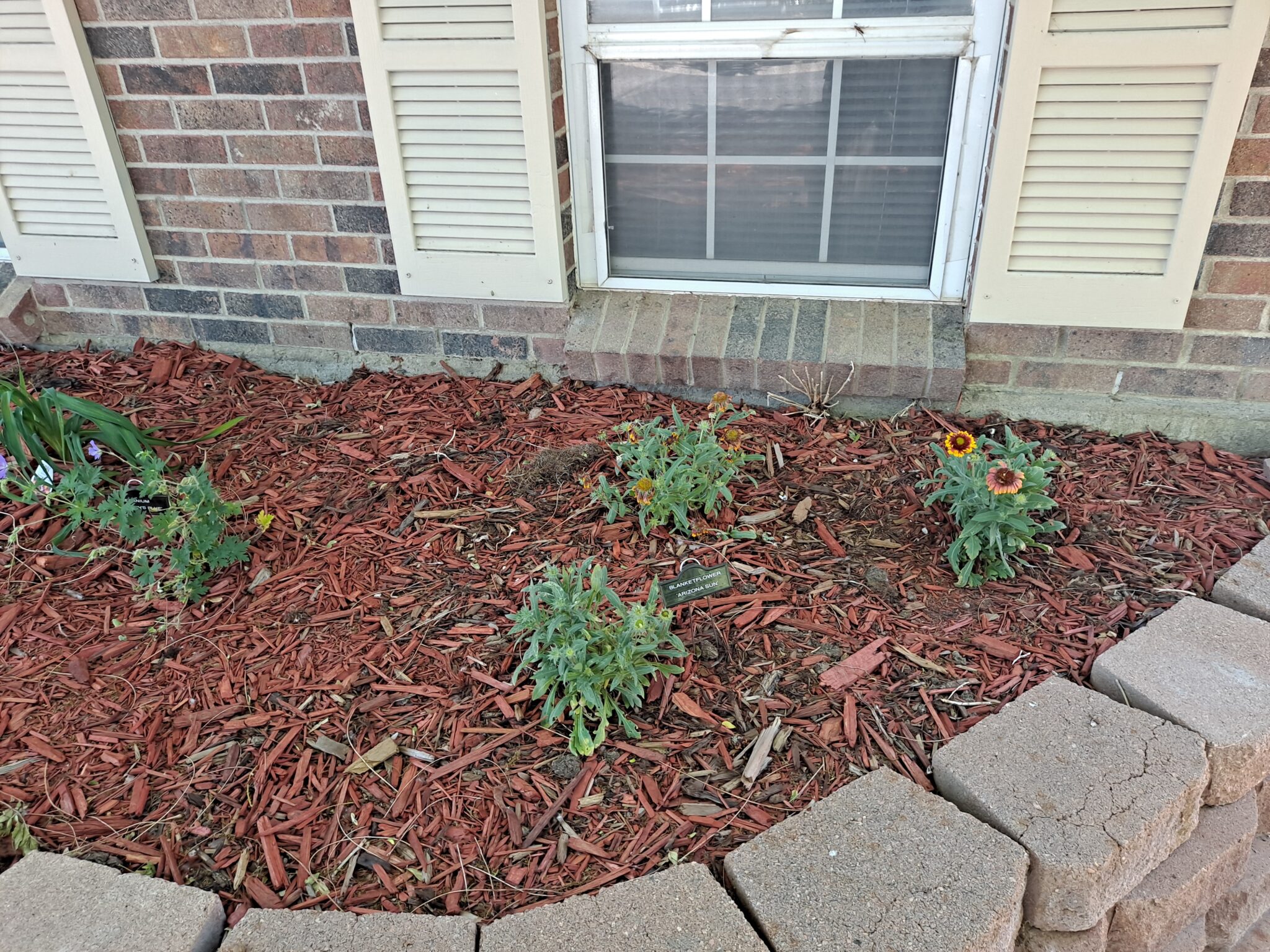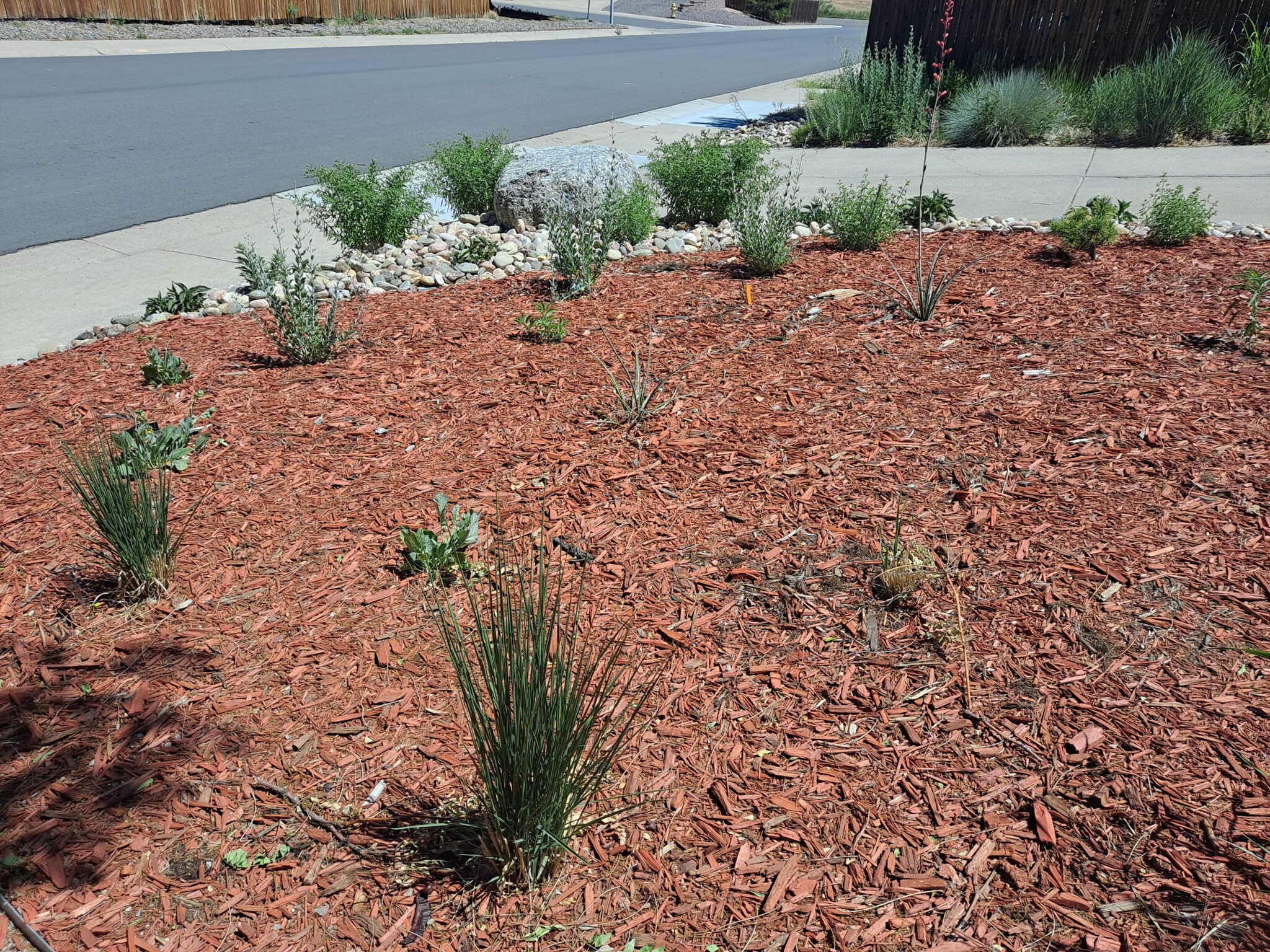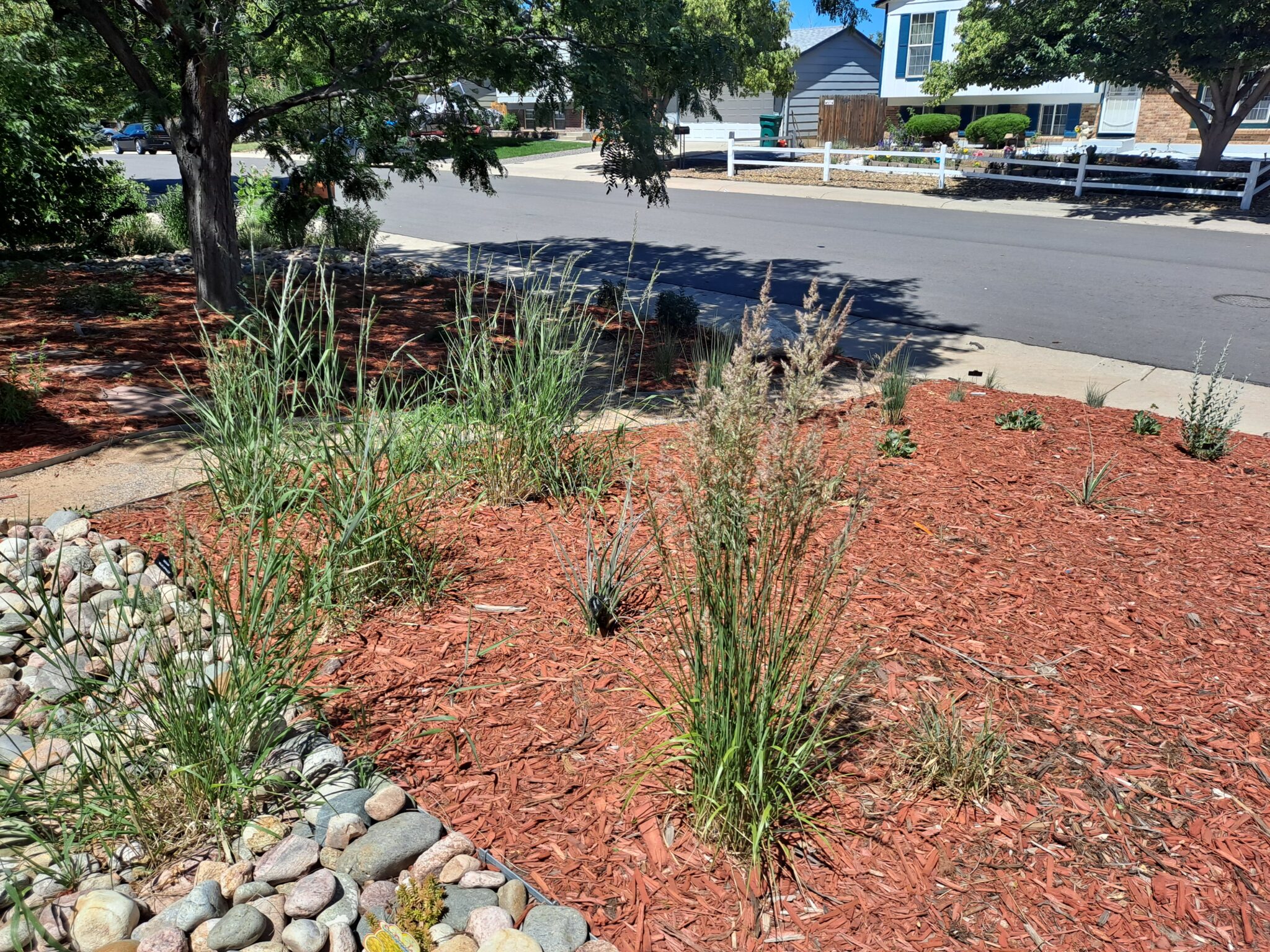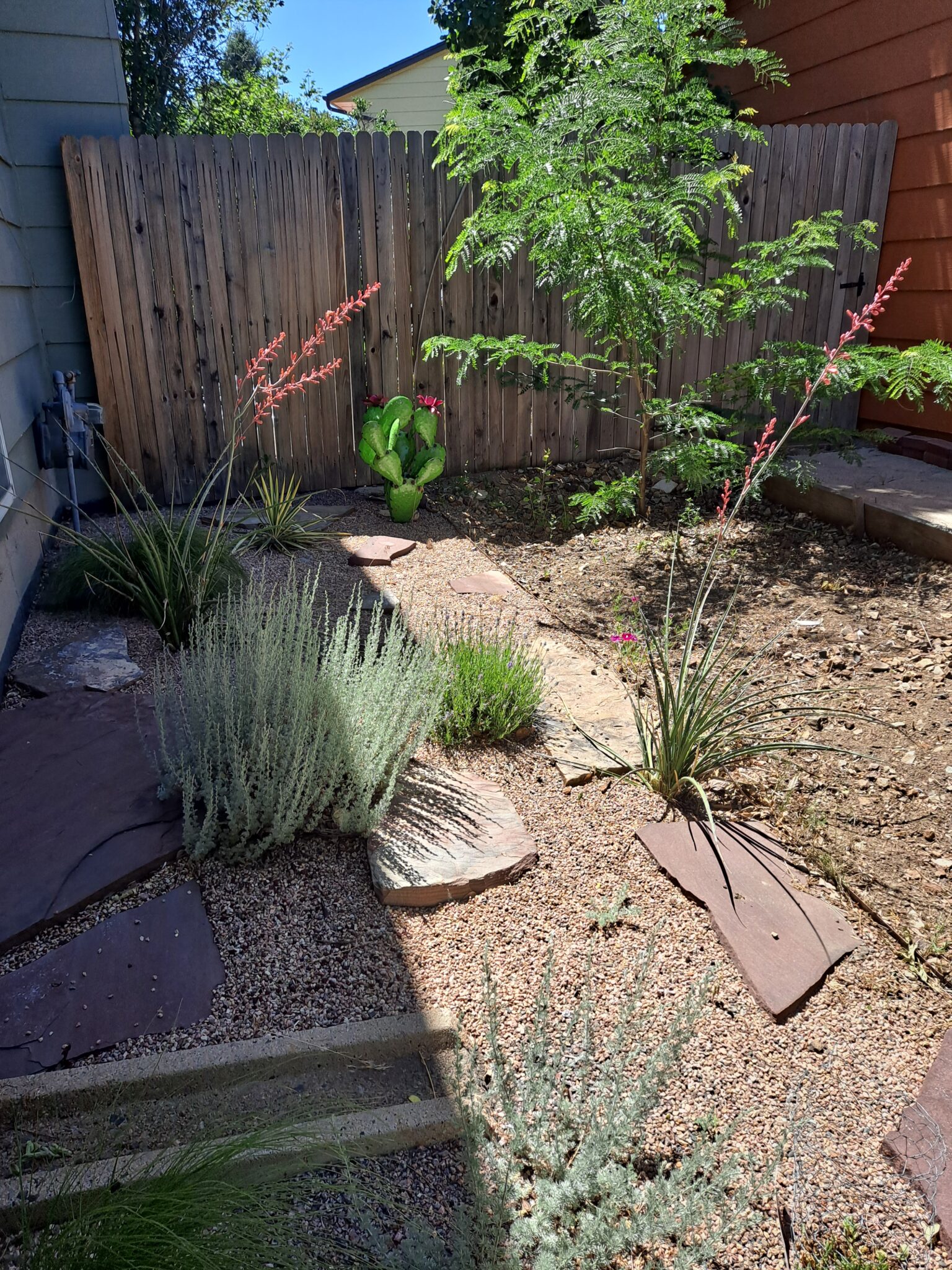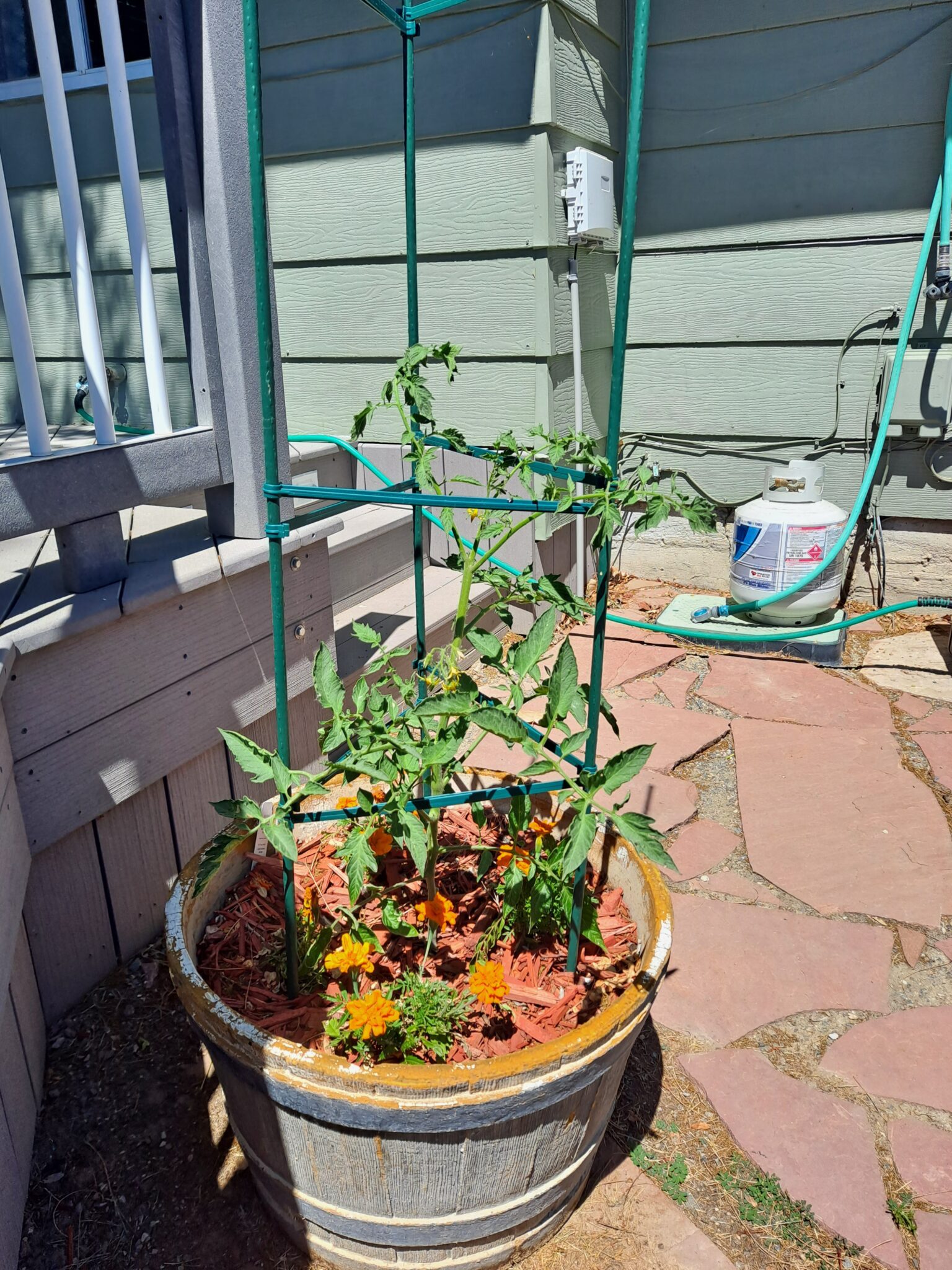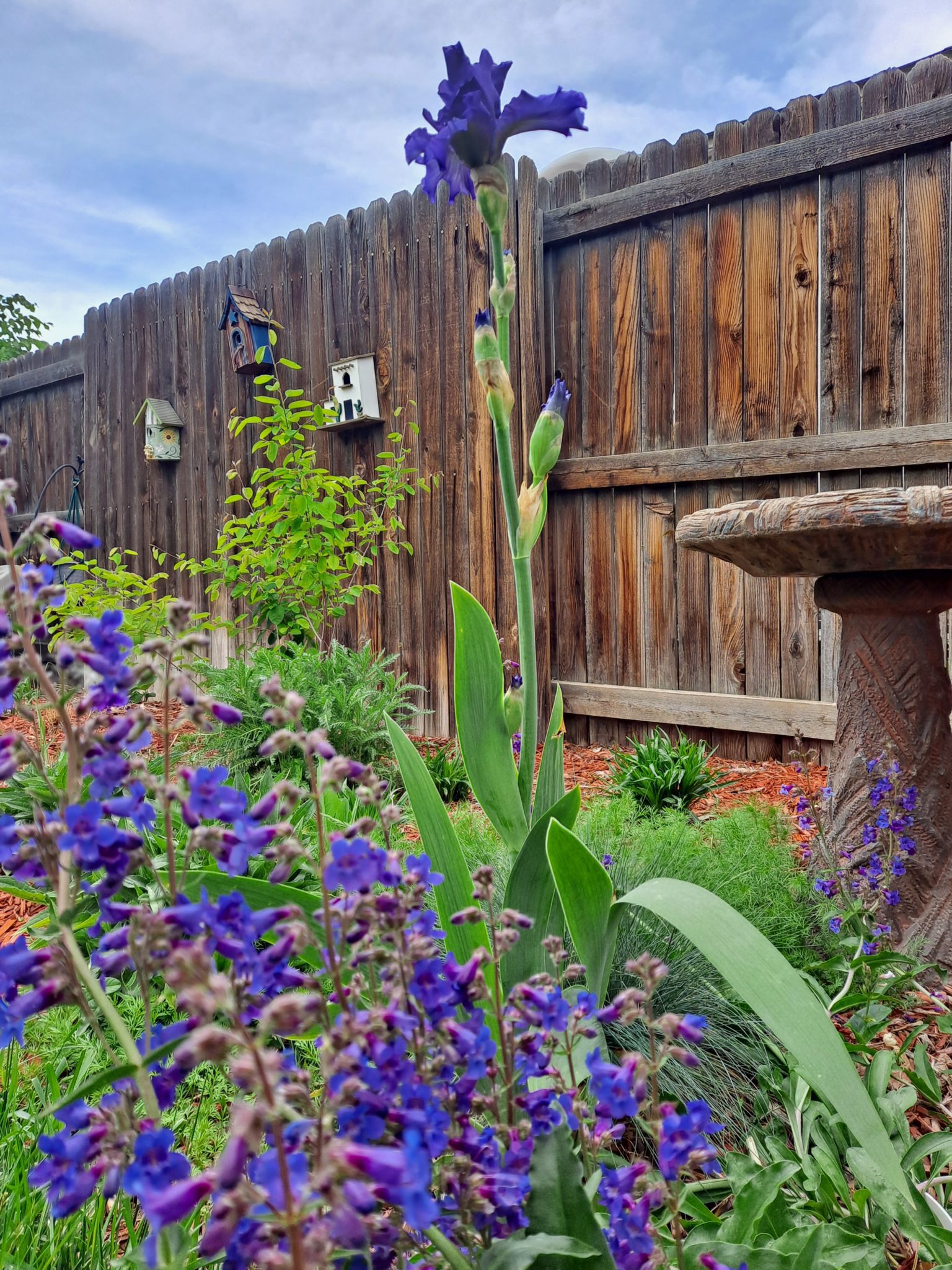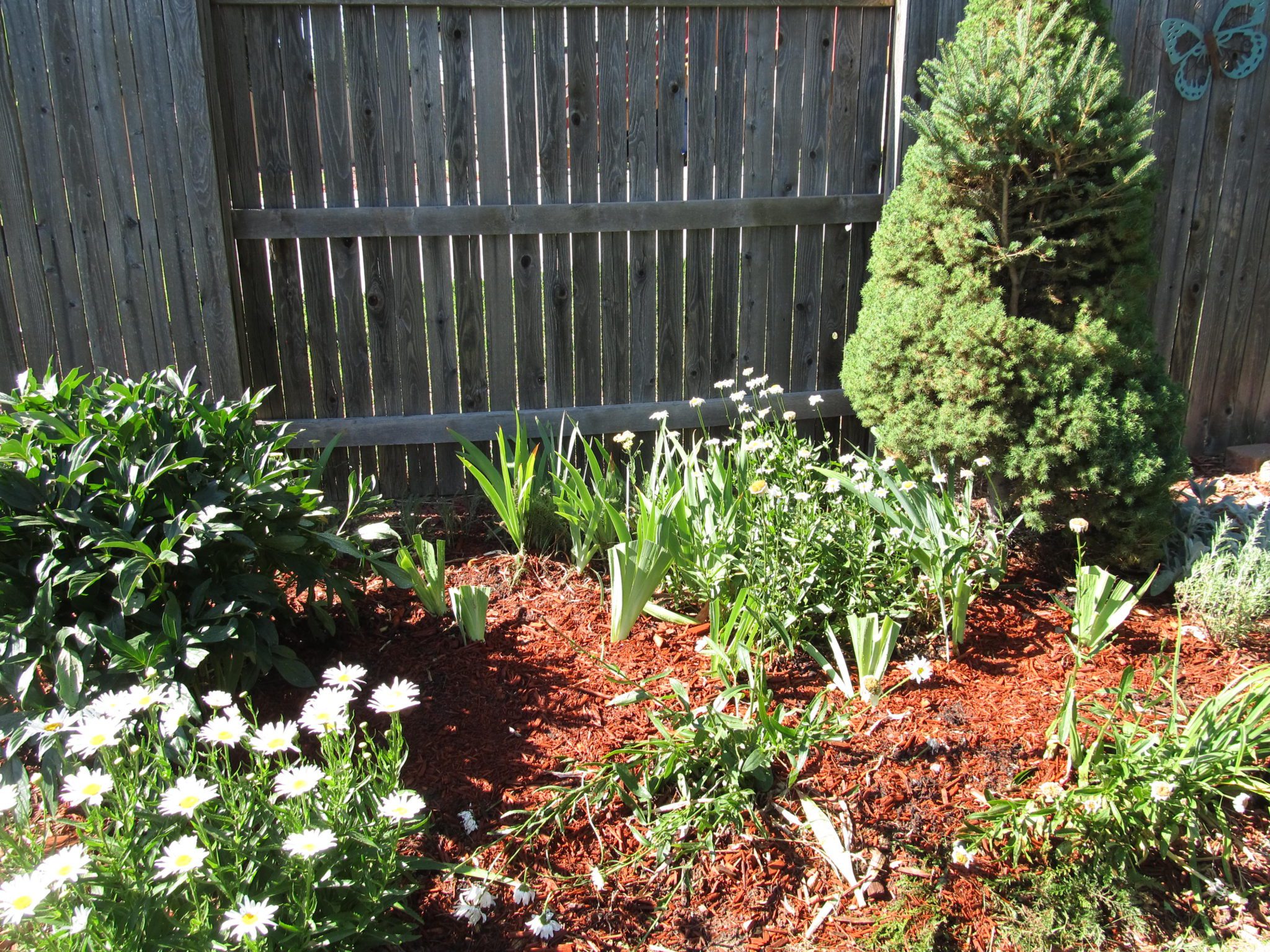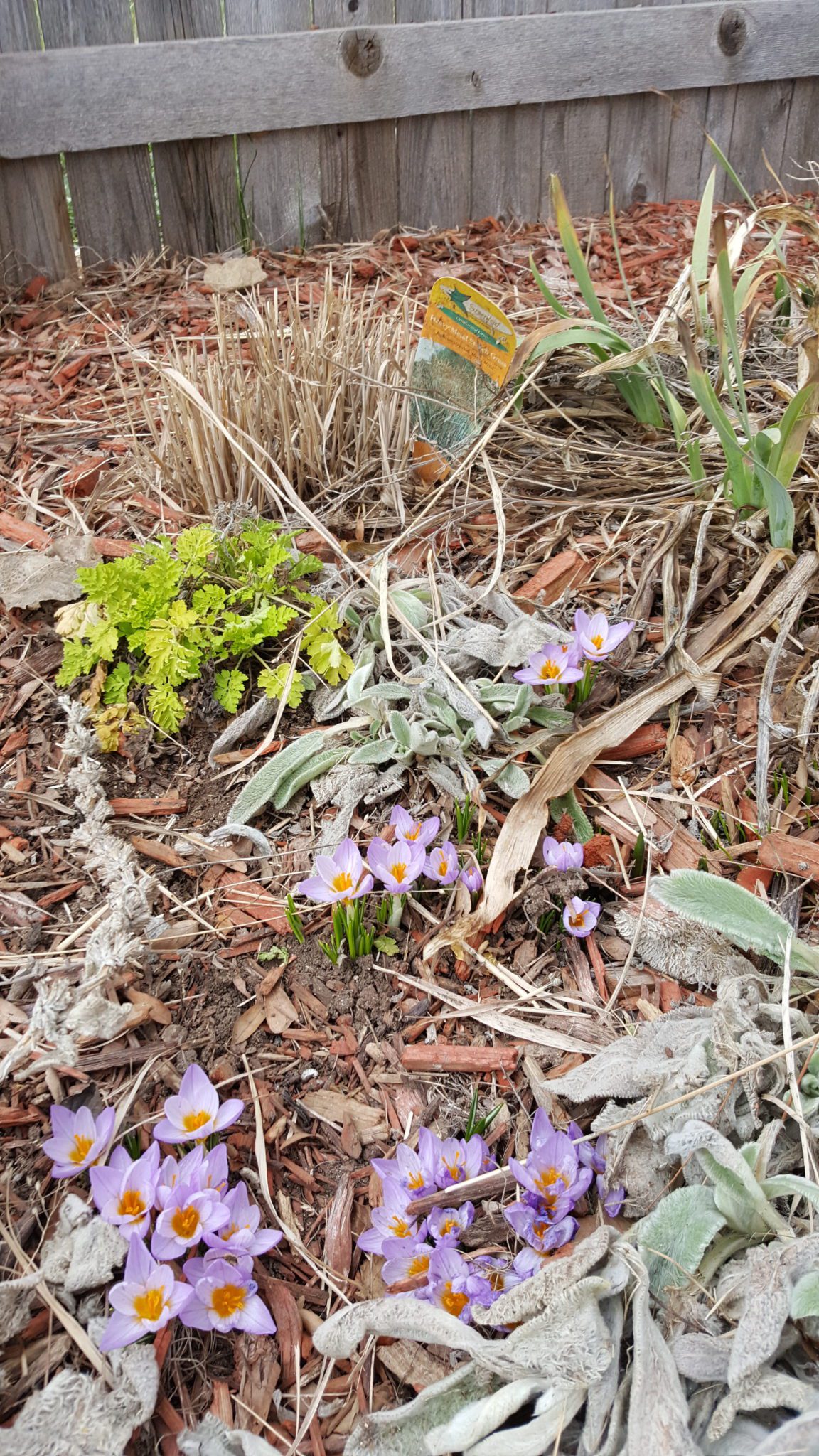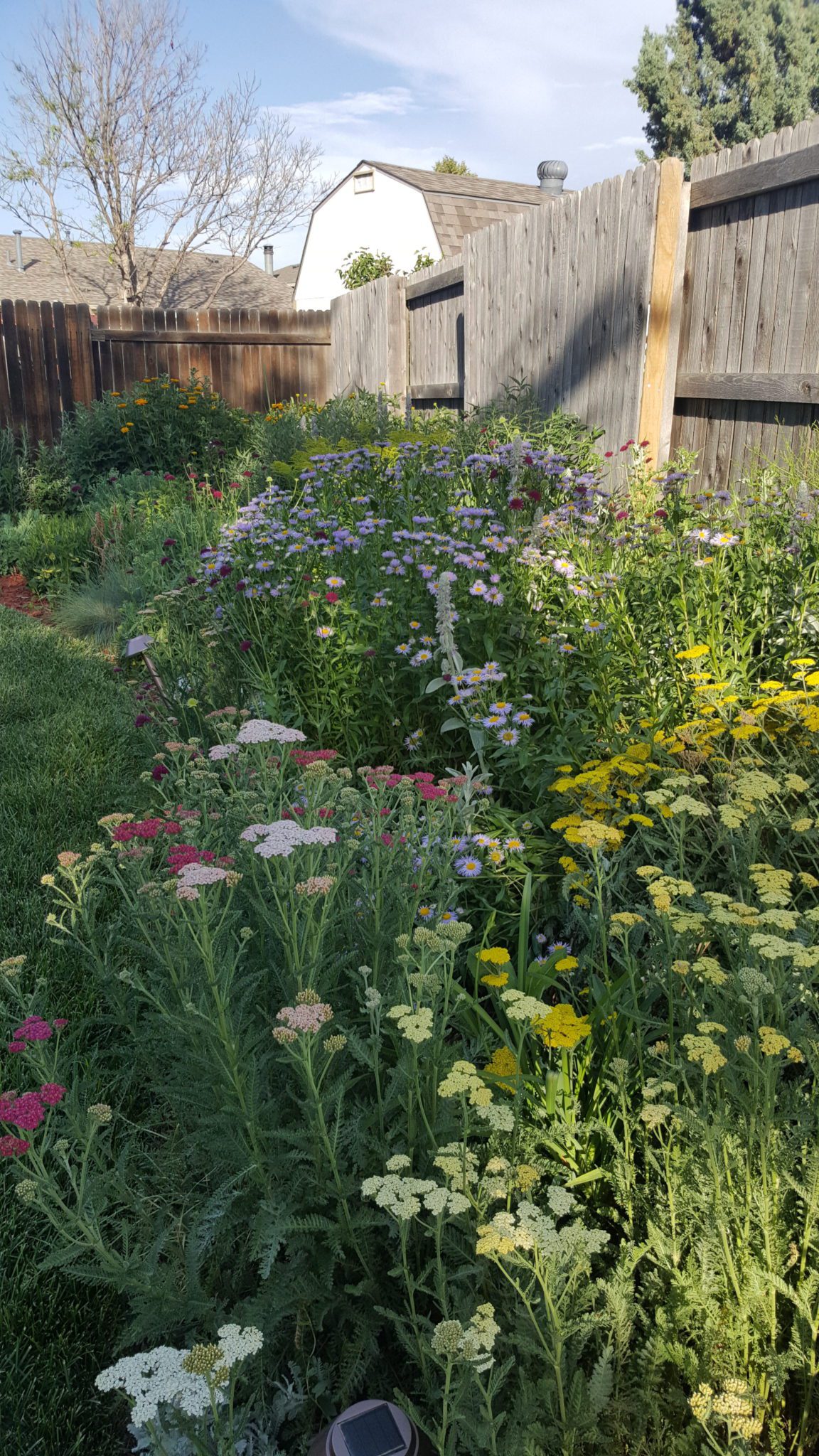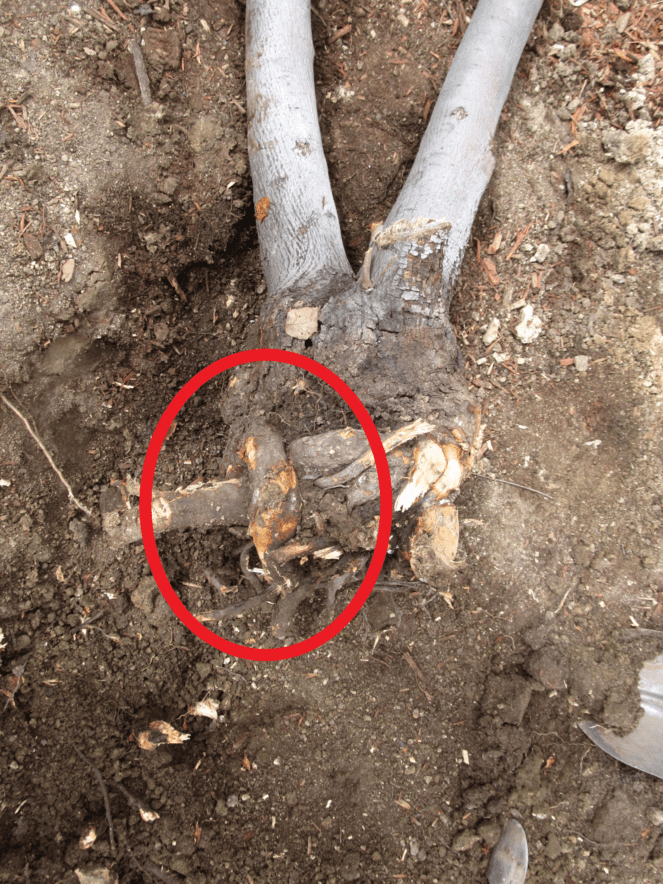
I have been gardening for nearly 30 years. You would think I would know what I am doing by now. You would be mistaken. This summer I made two novice blunders, both occurring in the waterwise front yard. Big enough blunders that it could have destroyed all the hard work and time MrsVintage and I put into the yard. There is a reason why I haven’t been posting anything about said front yard. It’s because it looked like hell. And it’s all my fault.
The drought tolerant plants were really struggling this year, and I couldn’t figure out why. In fact, the situation was pissing me off. I thought these plants were supposed to be so tough! In fact, I was concerned that we were going to lose a lot of our plants.
As you can see in the photo below, this plant is practically a skeleton. It’s desiccated and has been devoured by grasshoppers. I did learn something this year: grasshoppers LOVE drought stressed plants. I have bitched before about the locusts devouring our gardens before, but this year was particularly bad. Not just at our place, either. All along Colorado’s Front Range gardens and farmers crops had been ravaged by the tiny monsters. According to grasshopper experts, since we had such a wet spring and early summer in 2023, the damned locusts produced an above average crop of eggs. Definitely won’t have that problem next year.
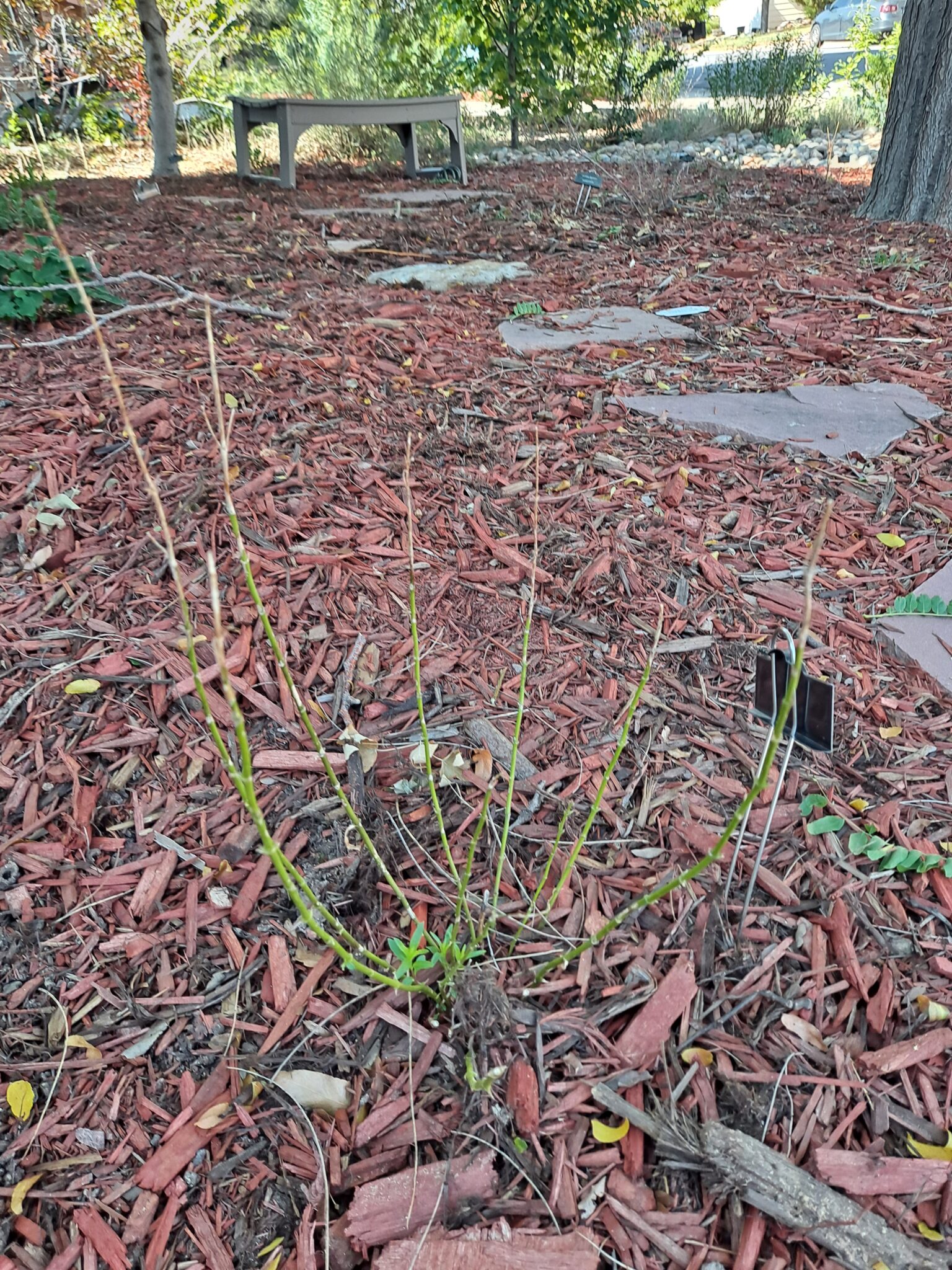
So, you might be asking, what was it that I did wrong? Let me give a little backstory first. Last week, as I went to the mailbox to check the mail, I stood and surveyed the front yard. I had just run automatic sprinkler system in the front yard a few days before, so I thought there should be moisture in the ground. I pulled back the mulch from one of the plants, and discovered the ground was bone dry. I checked a few more plants. Yep, bone dry. OK, that could be a problem.
I resolved that the following morning I would deep water the whole front yard. The next day rolls around, and I drag out the hose and run the water for 30 minutes in one spot. Soil should be nice and moist now! I have a soil moisture tester for just such occasions. Stuck the probe in the ground (or tried to. It was hard as a rock) a couple of inches deep. No moisture! None!
I tested a couple other locations where I had watered. Same deal. Confused, I start pulling the mulch back. And I continue to pull the mulch back. Then I pull the mulch back some more. See where I am going with this? The mulch was so thick that no water of any kind had reached the soil in several months! Even waterwise plants need some water every now and then.
Panic time!
This was an emergency situation. I grabbed a rake out of the shed and began raking mulch away from all the plants. Once that was accomplished, I began deep watering the whole yard.
I scheduled the automatic sprinkler system in the front the next morning, because I wanted to make sure the plants were watered really well. As luck would have it, the next evening we had an unexpected rainstorm come through that dumped nearly an inch of water. Checked the soil with my moisture tester again, and now the soil was wet several inches down.
Here was where I screwed up. Back in May we decided that the brown cedar mulch looked pretty shabby (see here: https://www.mrvintageman.com/this-week-in-the-garden-odds-and-ends/). So I covered it with a layer of colored mulch, as you can see in the photo below.

The mistake I made was in not making sure that the mulch wasn’t too deep around the plants themselves. Water couldn’t percolate through the mulch to the soil, which was fine in the parts where I don’t want things to grow (weeds), but bad for the plants that I do want to grow. This problem has now been corrected. The areas around the plants are like little islands in the sea of mulch. They are still mulched, just more thinly.
Good news
I am happy to report that once the plants got the moisture they needed, they bounced back dramatically. For example, these Blue Mist Spirea’s were looking a ghastly before. Their leaves were a faded grey, and the flowers were practically invisible. Afterwards, the leaves took on their normal olive-grey tone and the blue flowers began to pop.
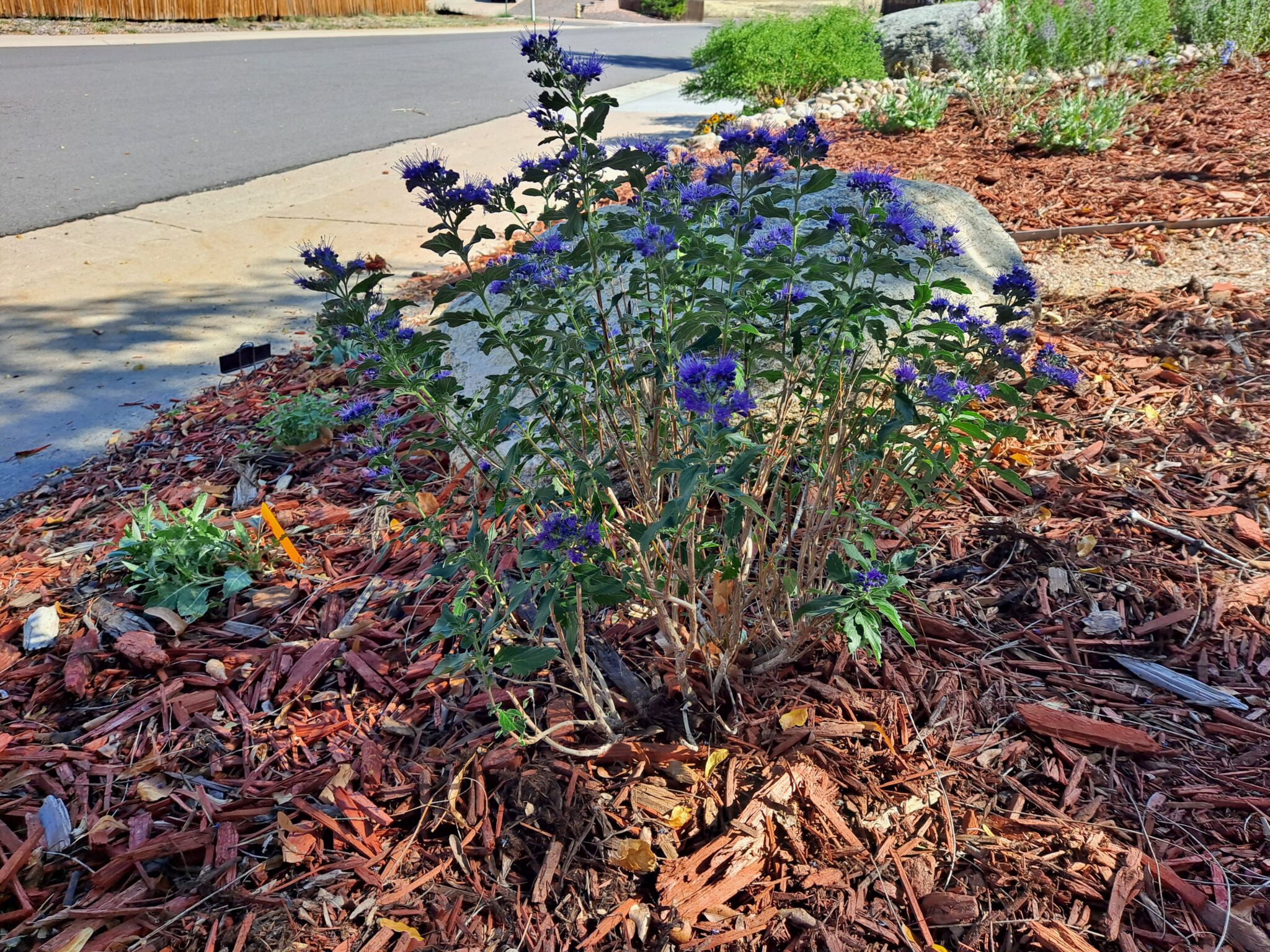
You can see the sad remains of this poor columbine. But if you look at the base of the plant, you can see rosettes of new leaves appearing. I feel much more confident that it will return next year.
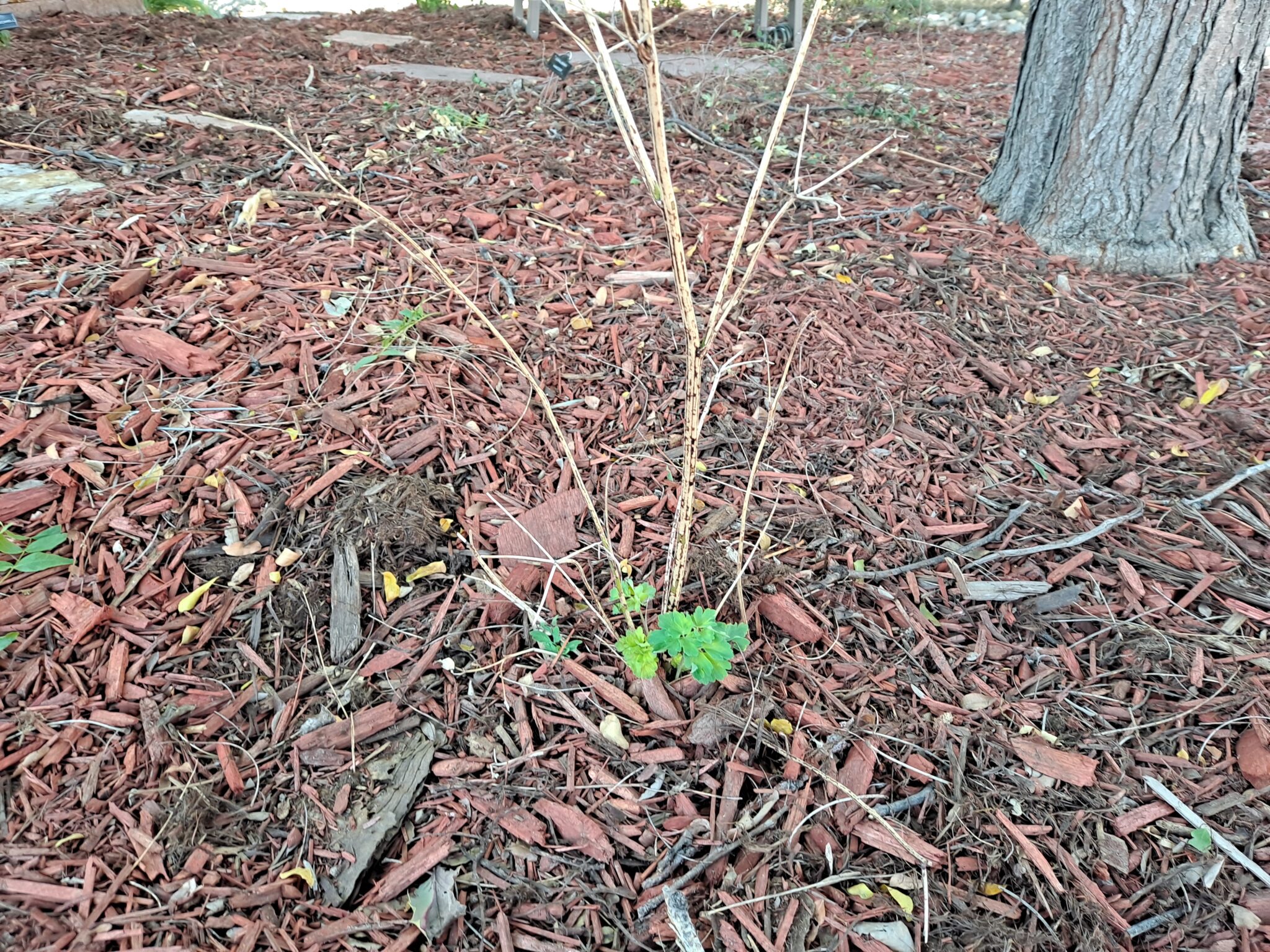
We did lose a couple of plants, unfortunately. The “Northwind” switchgrass you see below bit the dust. A couple of “Standing Ovation” little bluestems are also toast.
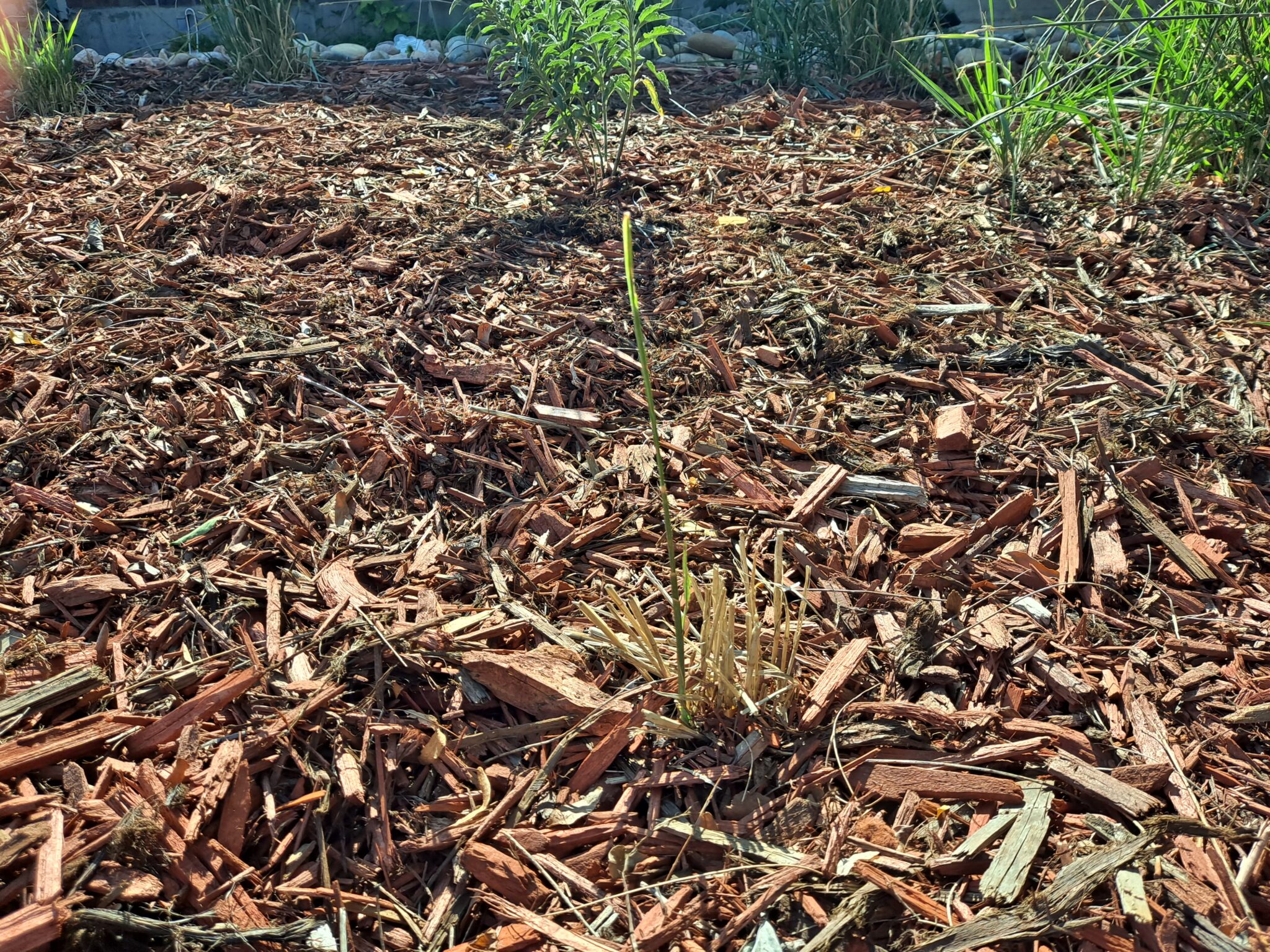
But it is amazing how most of the plants survived several months without water just fine, especially considering they aren’t fully established yet. Which just goes to show me that these plants are indeed as tough as they are touted to be.
Lessons learned
Ok, so just what did I learn from this? A couple of things. One, you gotta be careful with mulch. Some mulch is a good thing. In spring it helps to suppress weeds. In summer, it keeps the soil cooler and helps it retain moisture (if it gets moisture that is). In winter, it protects the crown and roots of the plants from bitter cold, and helps to prevent frost heave. So, mulch is good. However, more mulch does not mean better.
Two, I need be better about attention to detail. I should have been checking the soil moisture levels all summer. I know better than this. I just assumed that the plants were getting the water they needed. Assumptions, as I nearly found out, can be catastrophic. Adding too much mulch was a mistake, not inspecting the garden was boneheaded.
Something cool
There was something cool that occurred in the front yard this year.
In all the years that we have lived at the Vintage Ranch, I am not sure I have ever seen a hummingbird visit our yard. However, in late August I was lucky enough to see several catching a meal from several of the native plants. I took this picture from the car as I was backing out of the garage, so it’s a pretty bad photo. But if you look between the purple and blue flowers, you can see a blur that is a hummingbird.
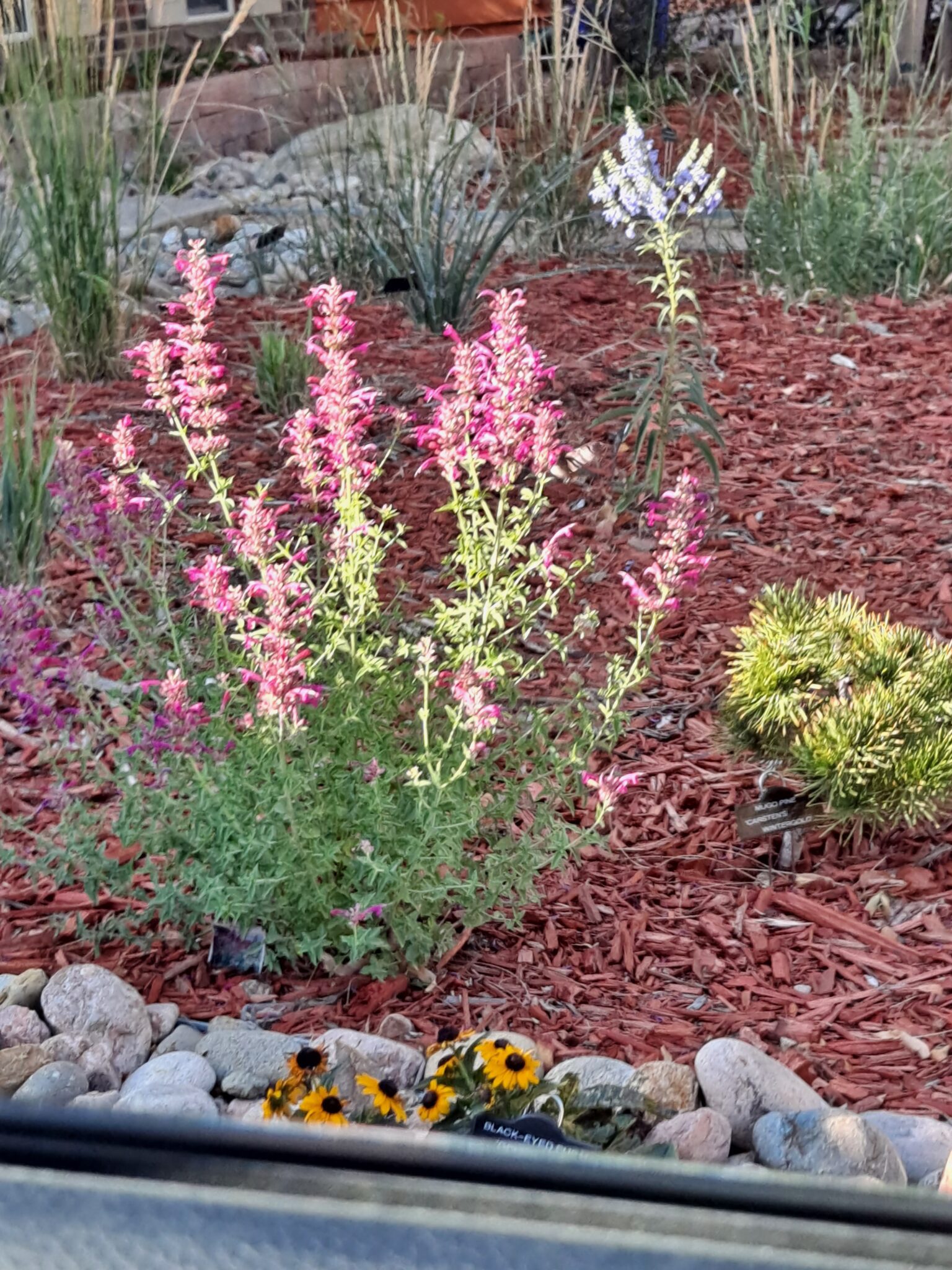
Can’t see it? Here’s a closer view. The hummingbird is that tiny brown blur in the middle of the circle. It makes me very happy knowing that MrsVintage and I have created a oasis in our suburban neighborhood we get to share with our native fauna. Grasshoppers excepted.
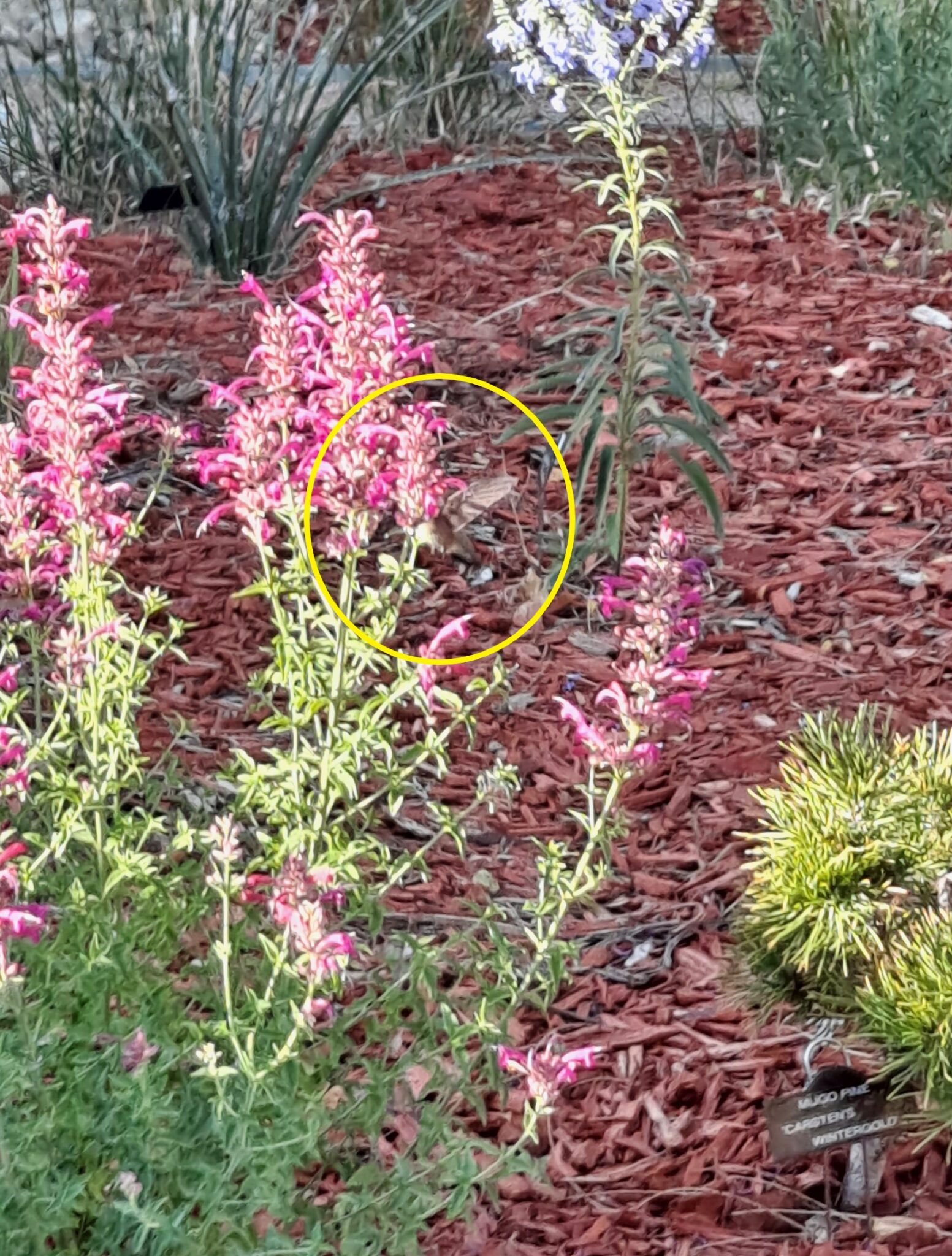
For those curious about what the two plants in the picture are: the blue flowered one is “New Mexico” prairie sage, and the pinkish/purplish one is “Sonoran Sunset” hyssop. Both are western natives.

